Temple University Opera Theater’s ‘Le nozze di Figaro’ in pictures
See how the cast and crew reconceptualized this opera to make it fresh.
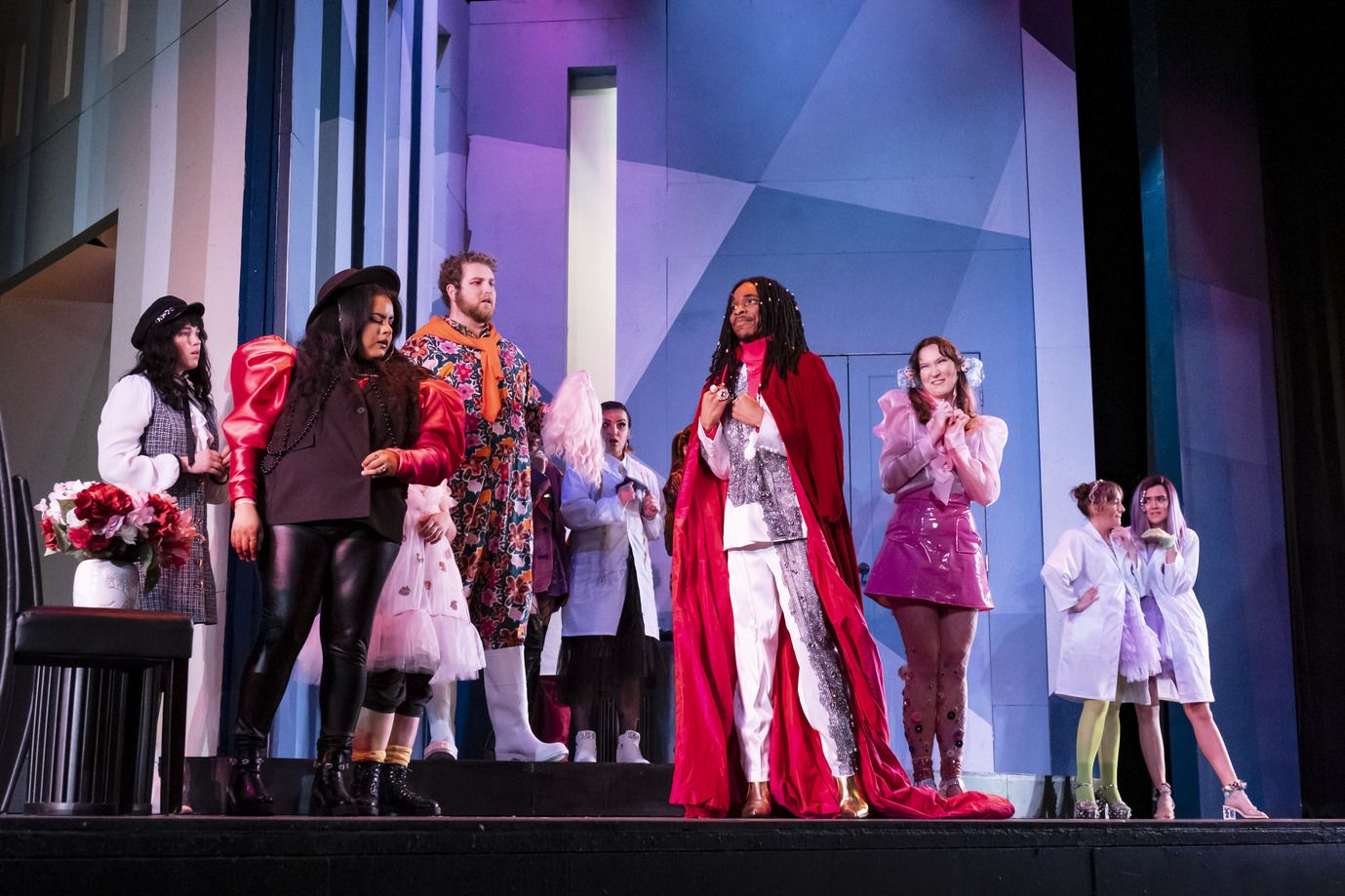
Temple University Opera Theater’s spring production of Mozart’s Le nozze di Figaro was a true cross-disciplinary collaboration—from keyboard studies students accompanying rehearsals and playing in the orchestra to theater majors designing costumes to voice and opera cast members performing on stage.
“The number of students who touched this production is well in the hundreds,” said Brandon McShaffrey, stage director and assistant professor in the School of Theater, Film and Media Arts.
Deemed the “Handel’s Messiah of opera” by both Paul Rardin, chair of vocal arts in Boyer College of Music and Dance, and Michael Sakir, music director and conductor of Temple’s production of Le nozze di Figaro, Mozart’s classical farce is set on Figaro’s wedding day in which he, his bride-to-be Susanna and others try to outwit the Count, who’s seeking to seduce Susanna. This situational comedy is filled with misunderstandings and hijinks, including mistaken identities and disguises.
Its themes center around gender and class politics, making it relevant for today’s audience. Additionally, to modernize the work, McShaffrey reconceptualized it to speak to 21st century gender expression
“I like to create a visual world that’s based in the truths of the opera but put through a contemporary lens,” McShaffrey said. “Based on our production, I wanted to make sure we looked at both traditional gender roles and what current gender identities are represented in this world. There are so many layers of gender in the opera, which feels contemporary.”
See how the cast and crew put a modern spin on a classic opera.
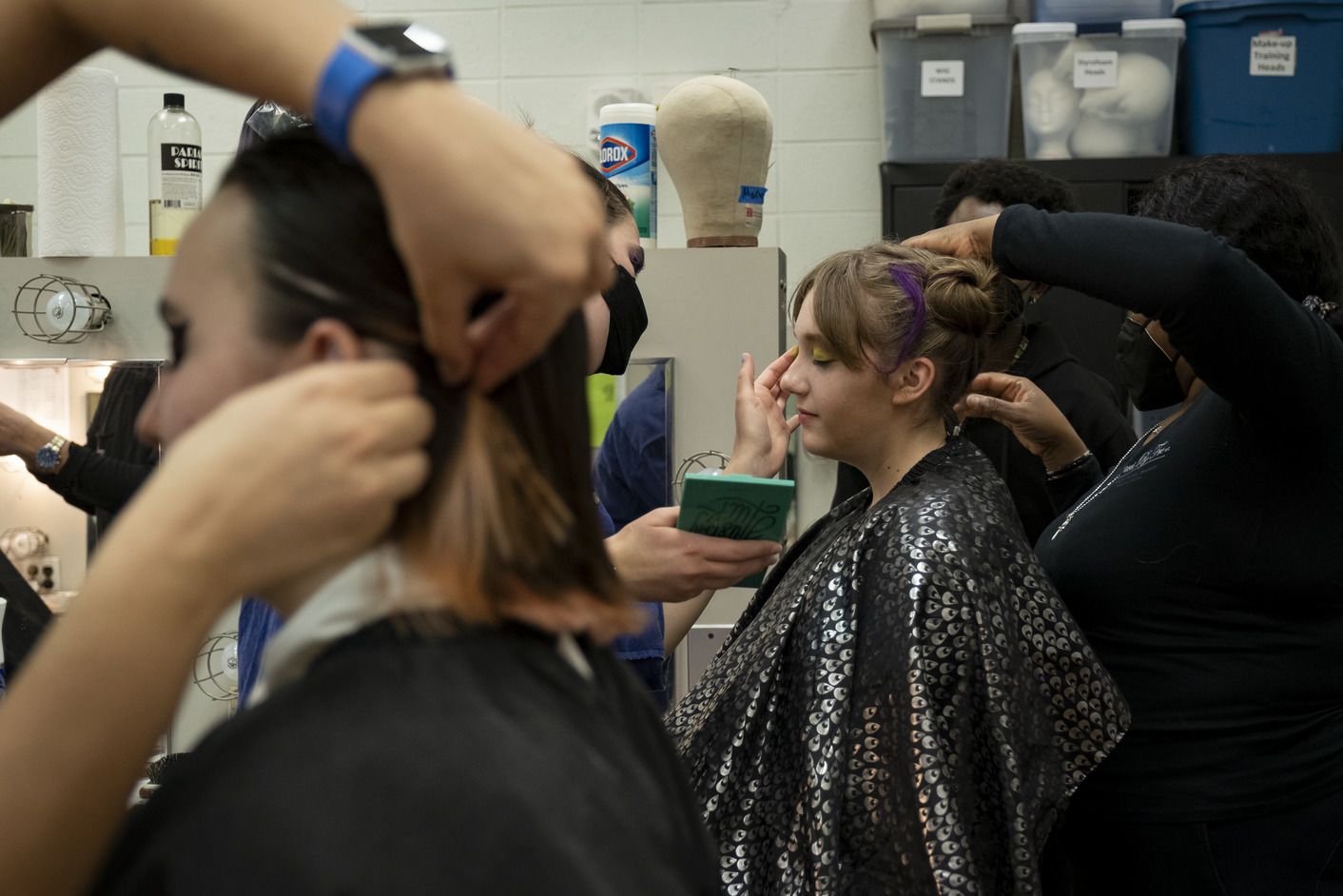
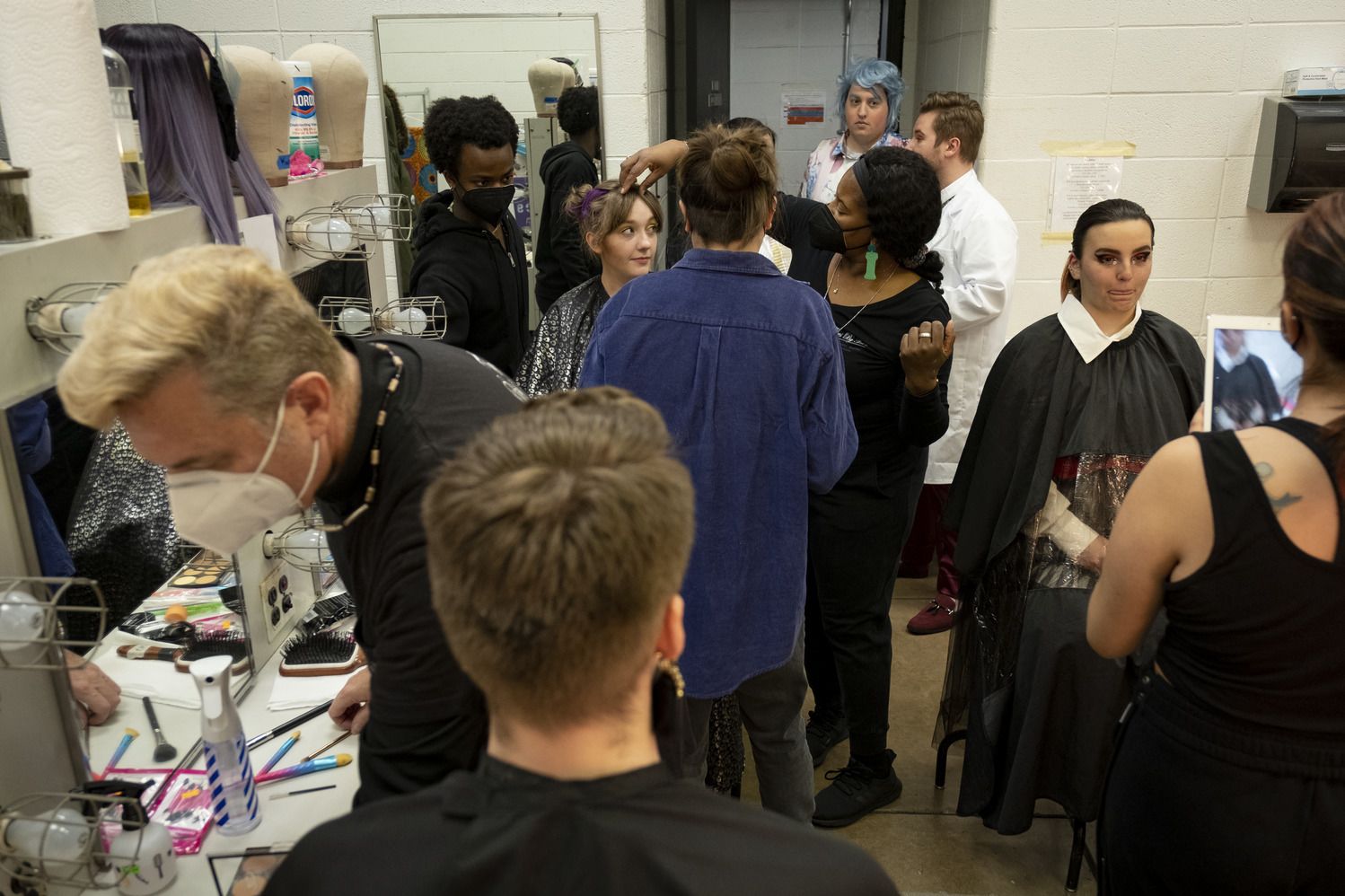
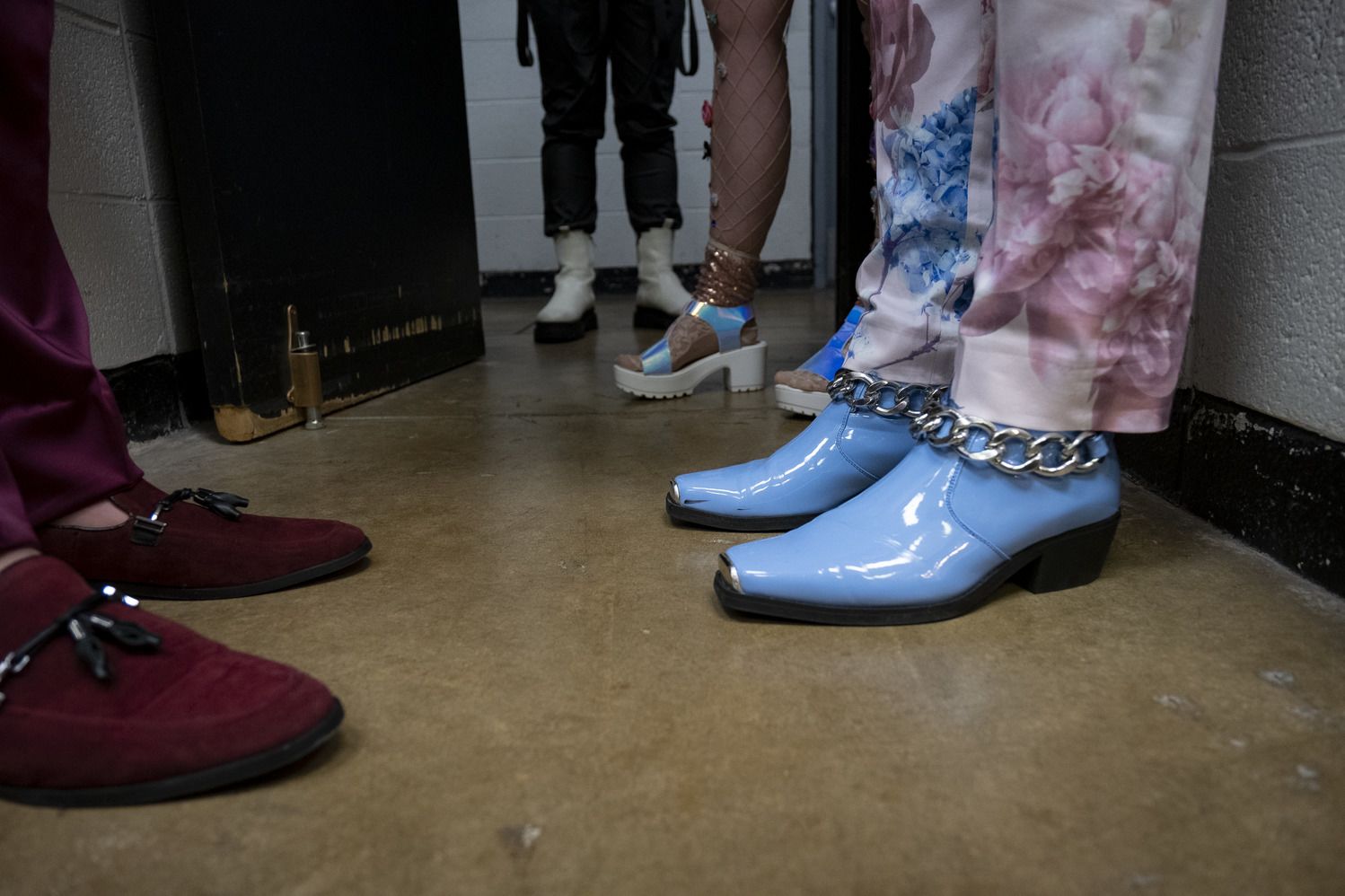



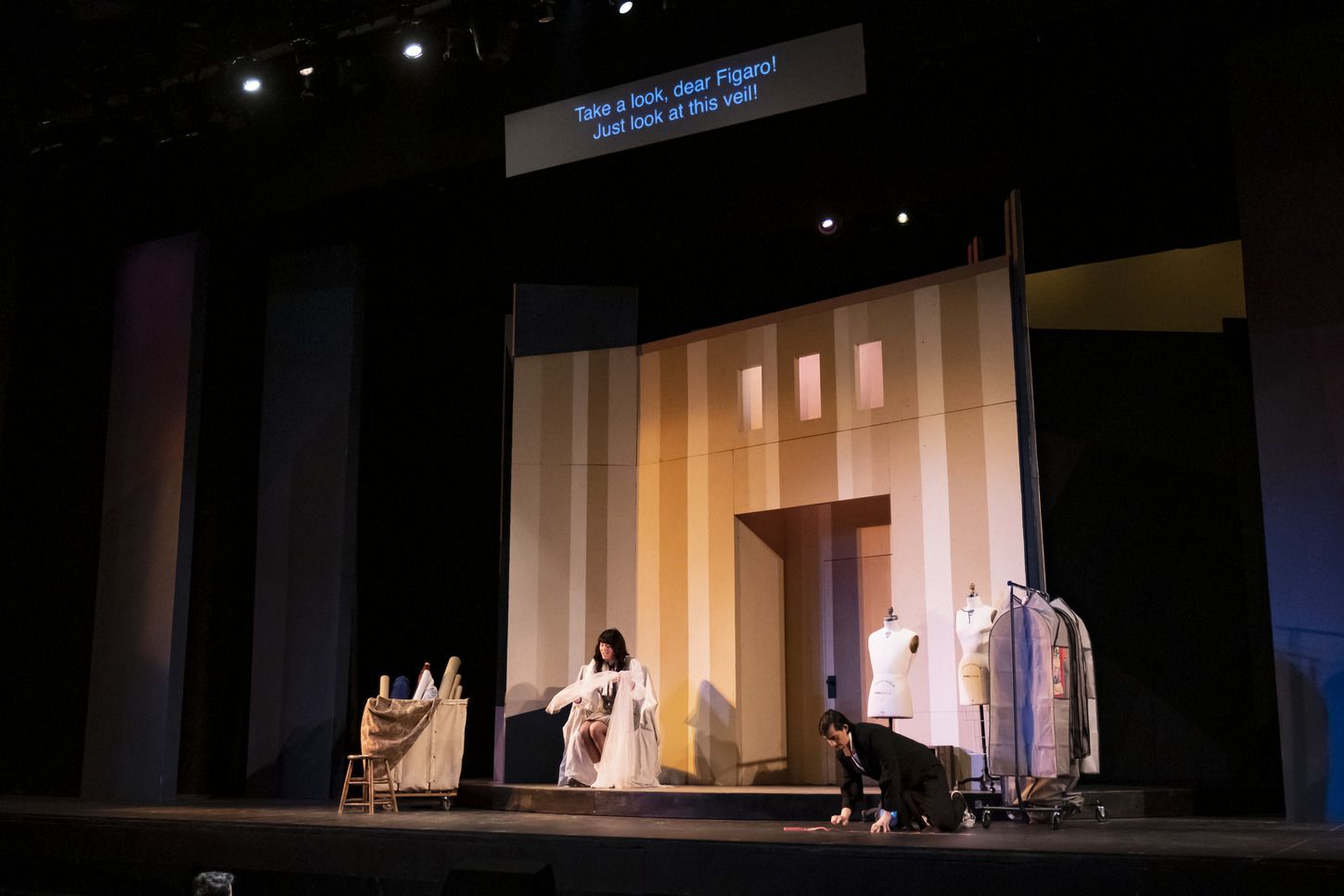
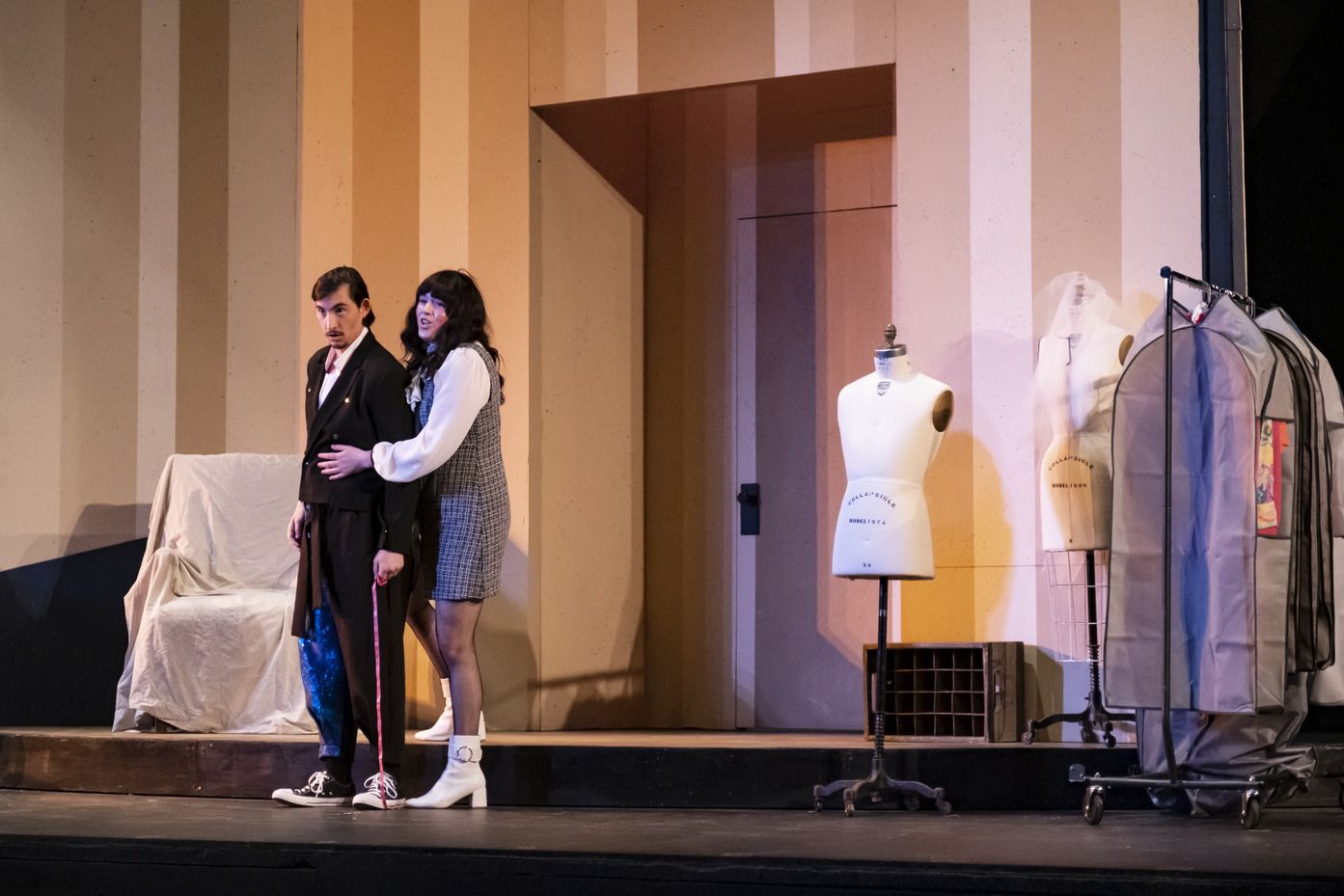
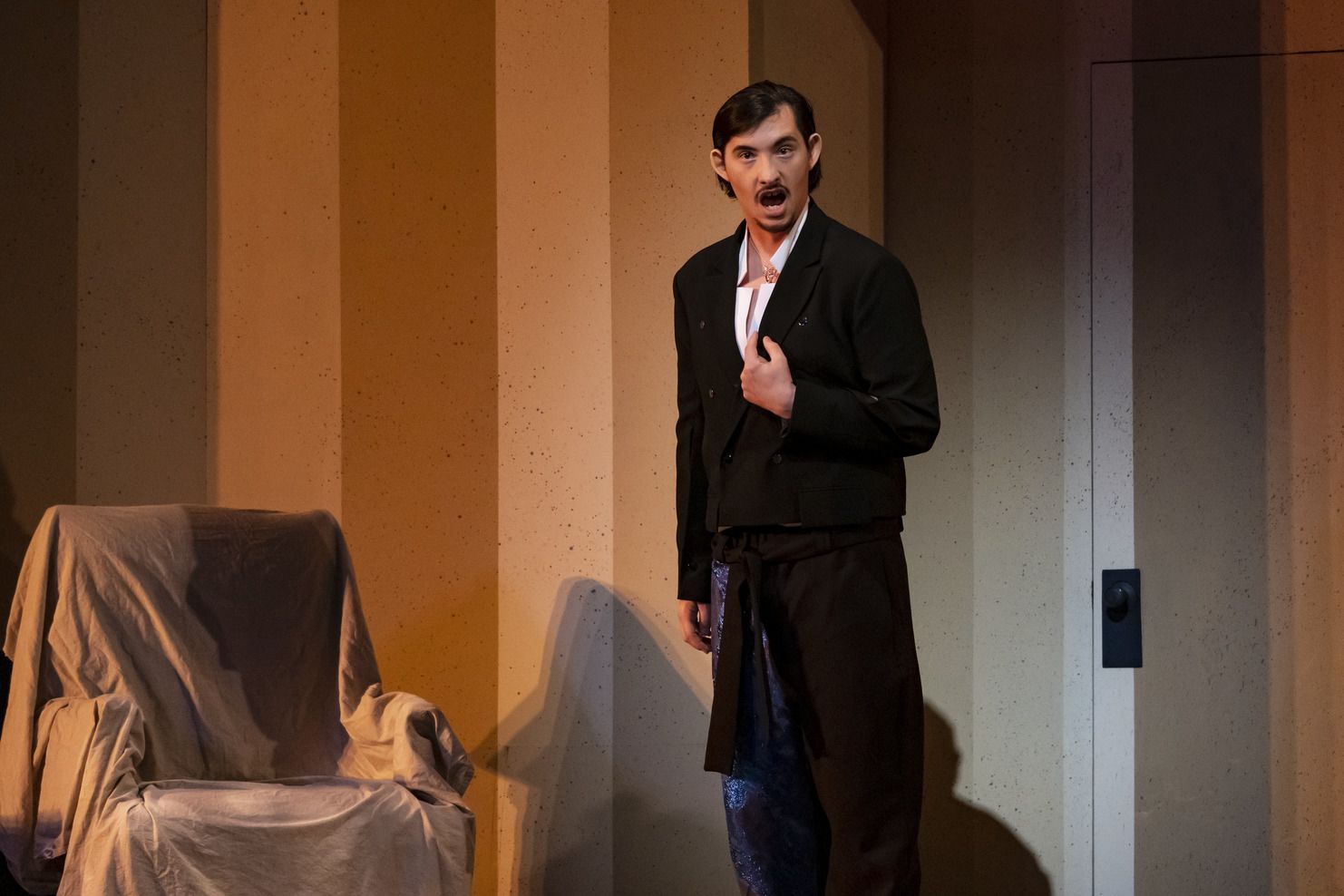
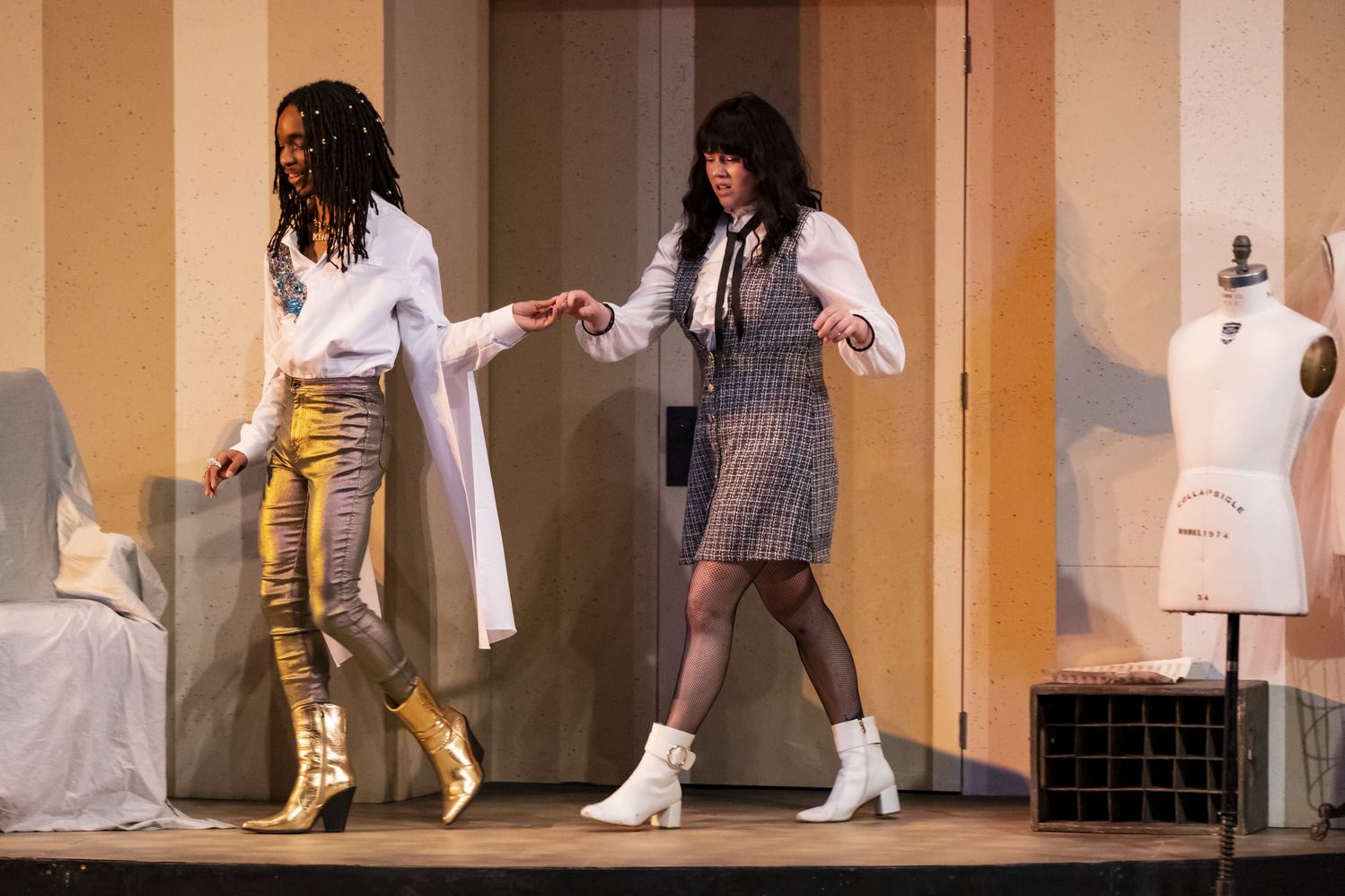




“I jumped in with this standard opera to make it feel contemporary, fresh and accessible to the wider student population. This is the first experience with opera for a lot of the audience, so it’s important that a new audience member sees a world that represents the one they live in. I wanted to create a production that felt like Temple and had the conversations that are specific to our demographic and what is on the tongue of the students these days.”
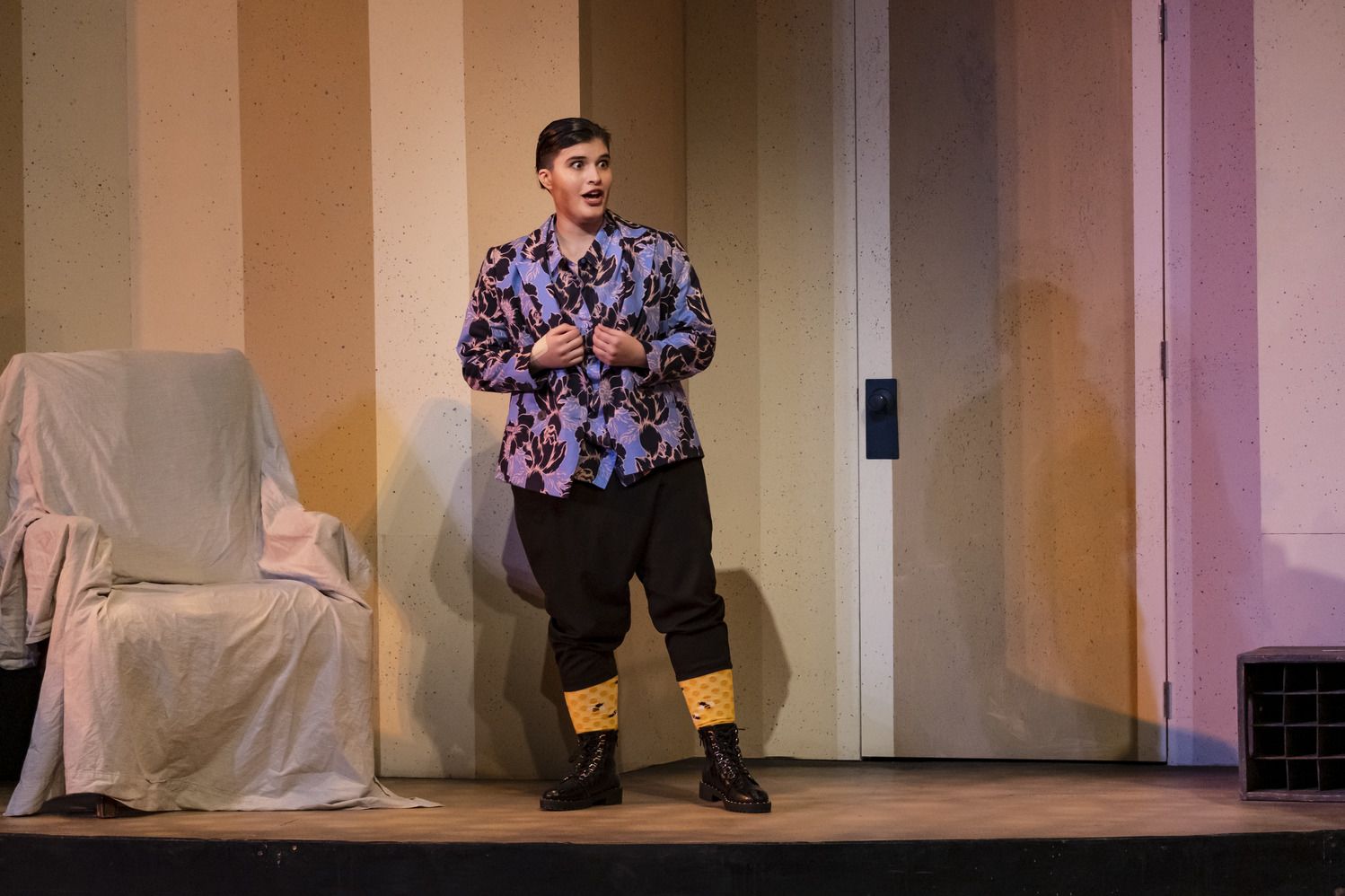
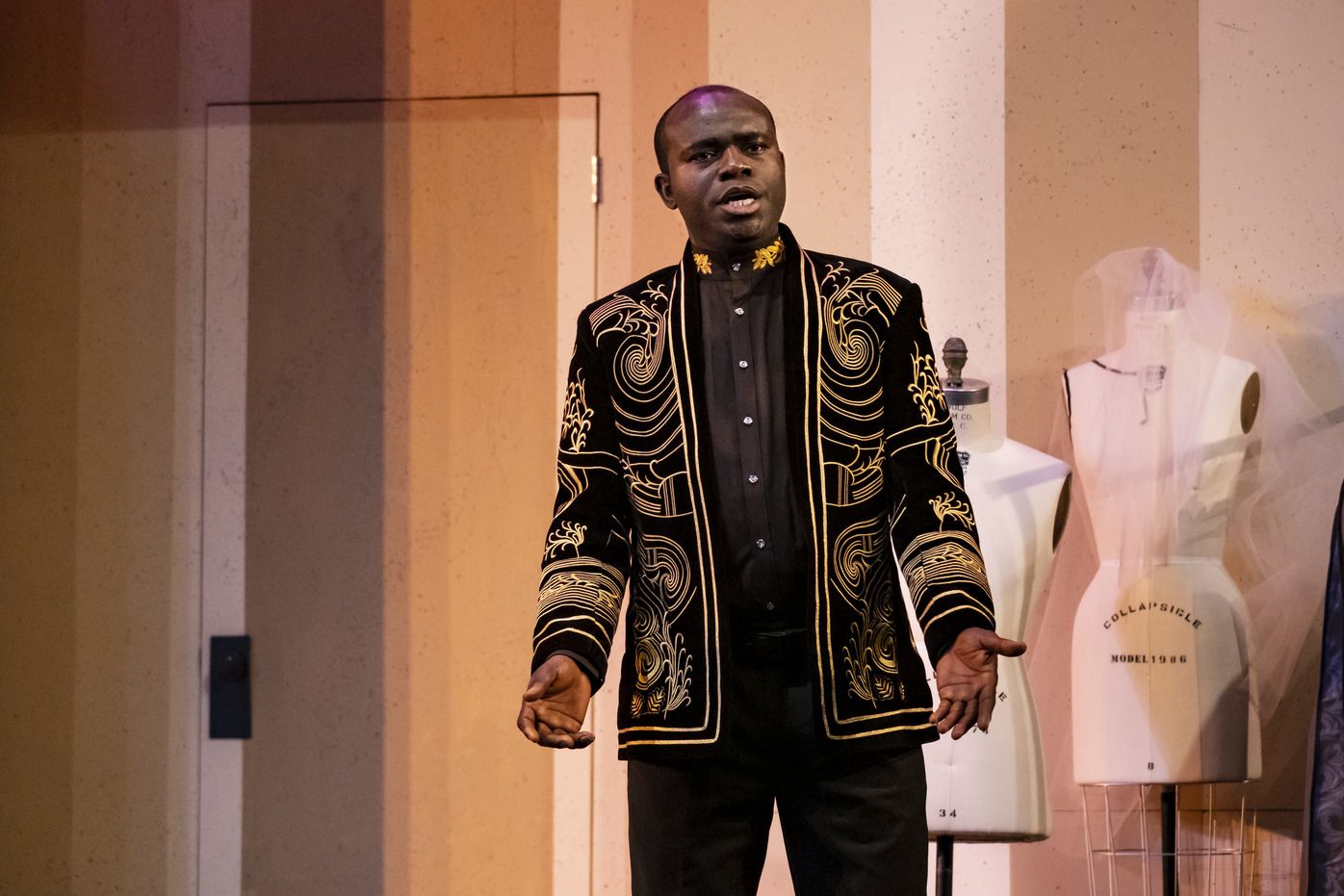
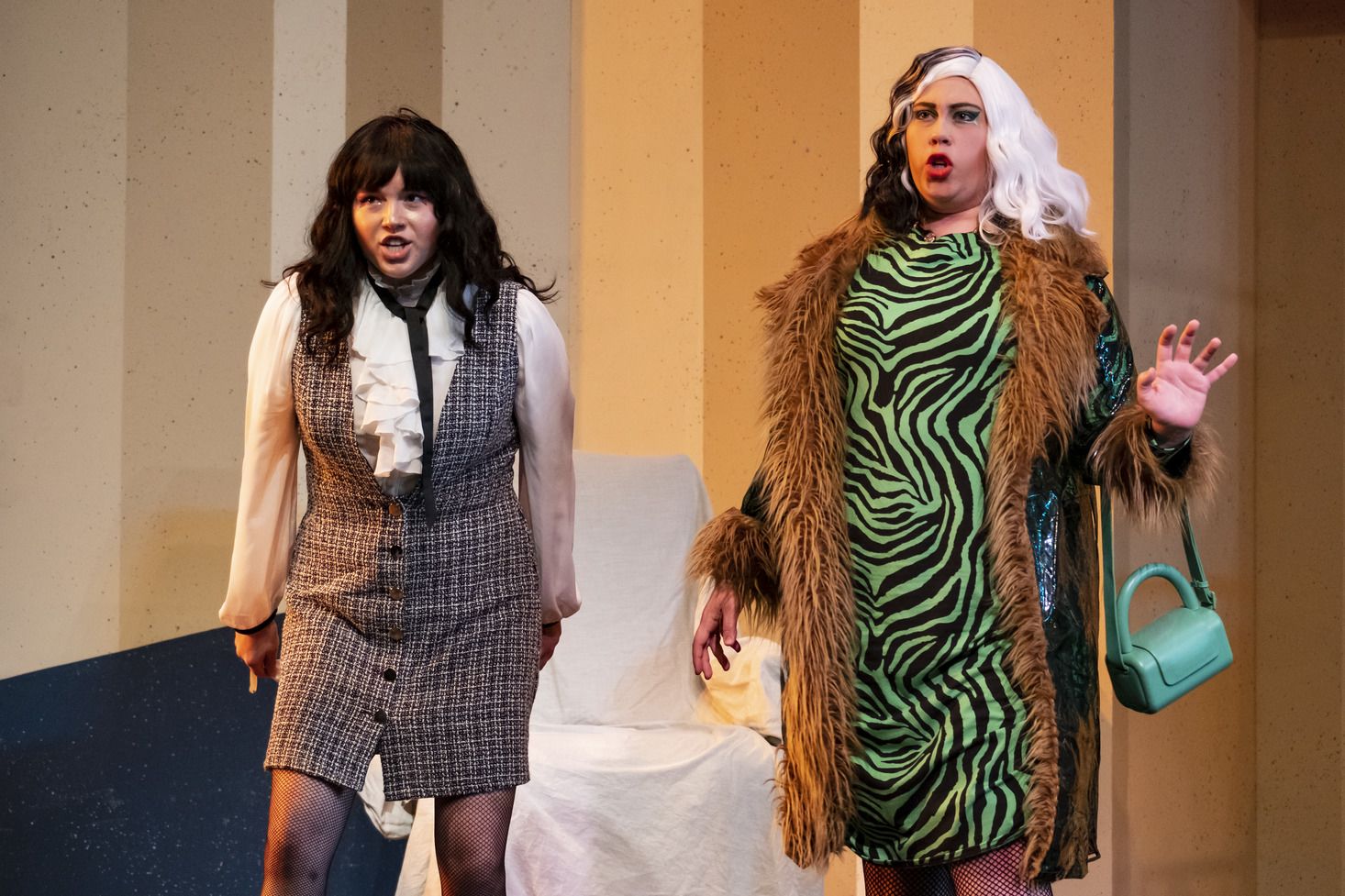
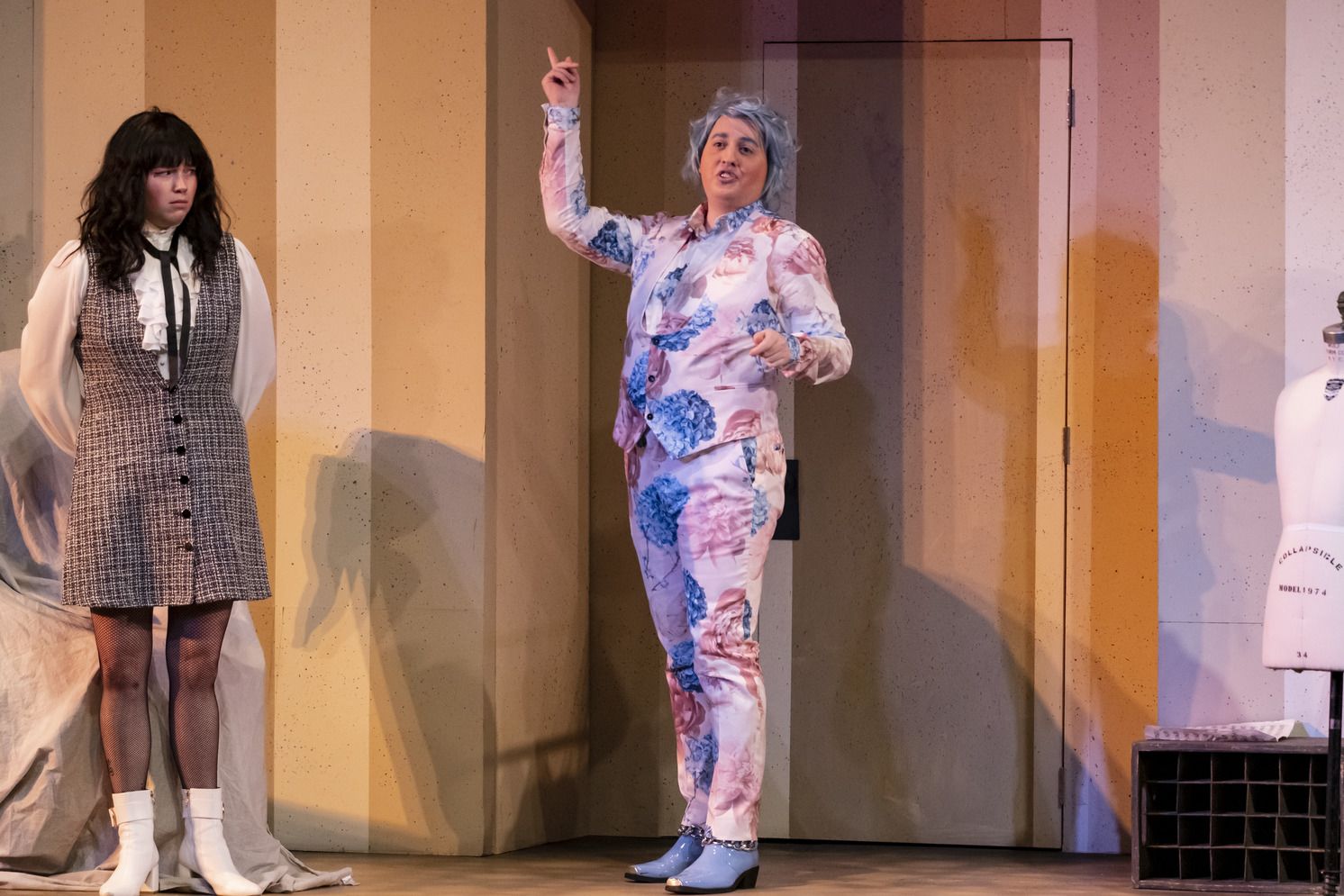
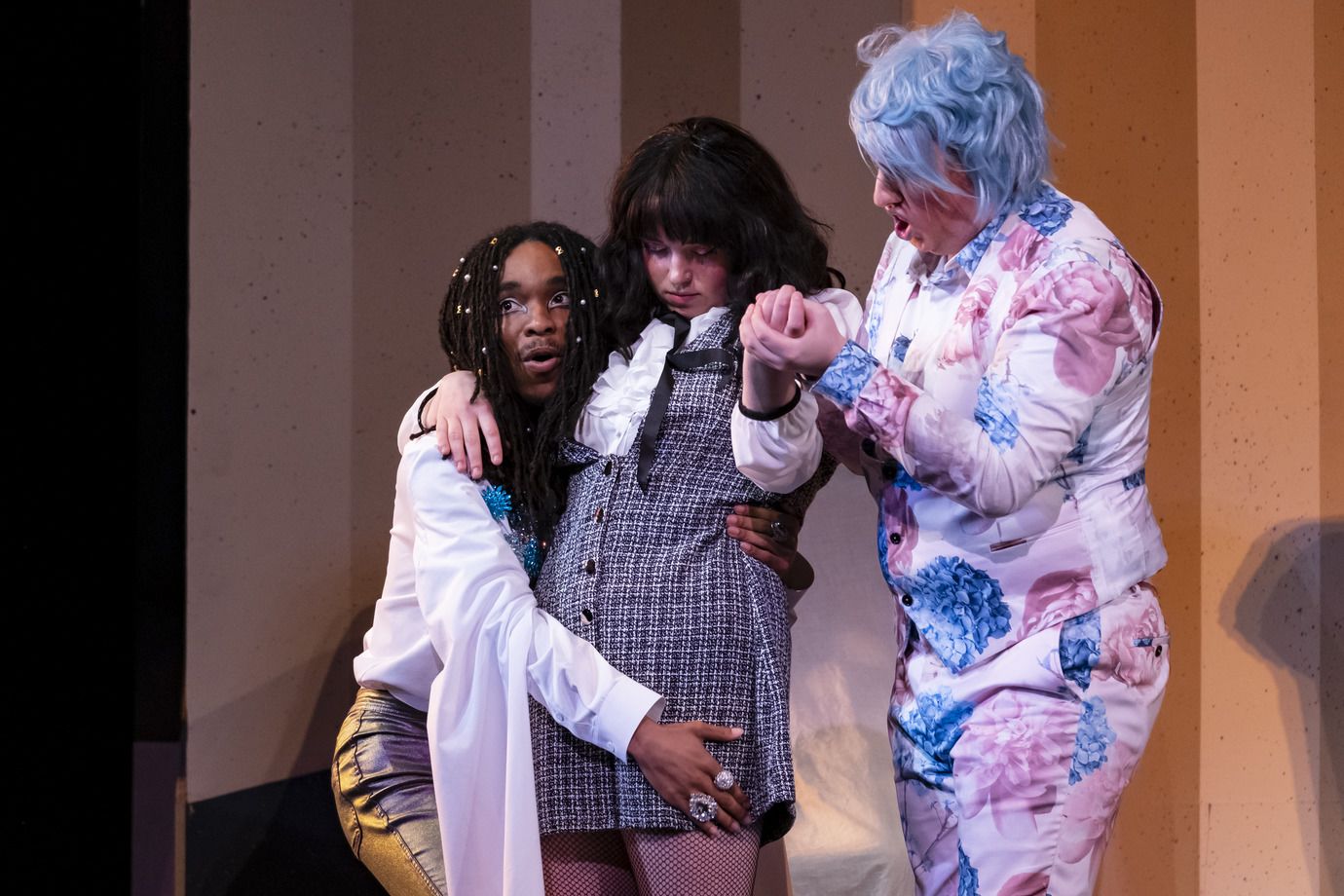





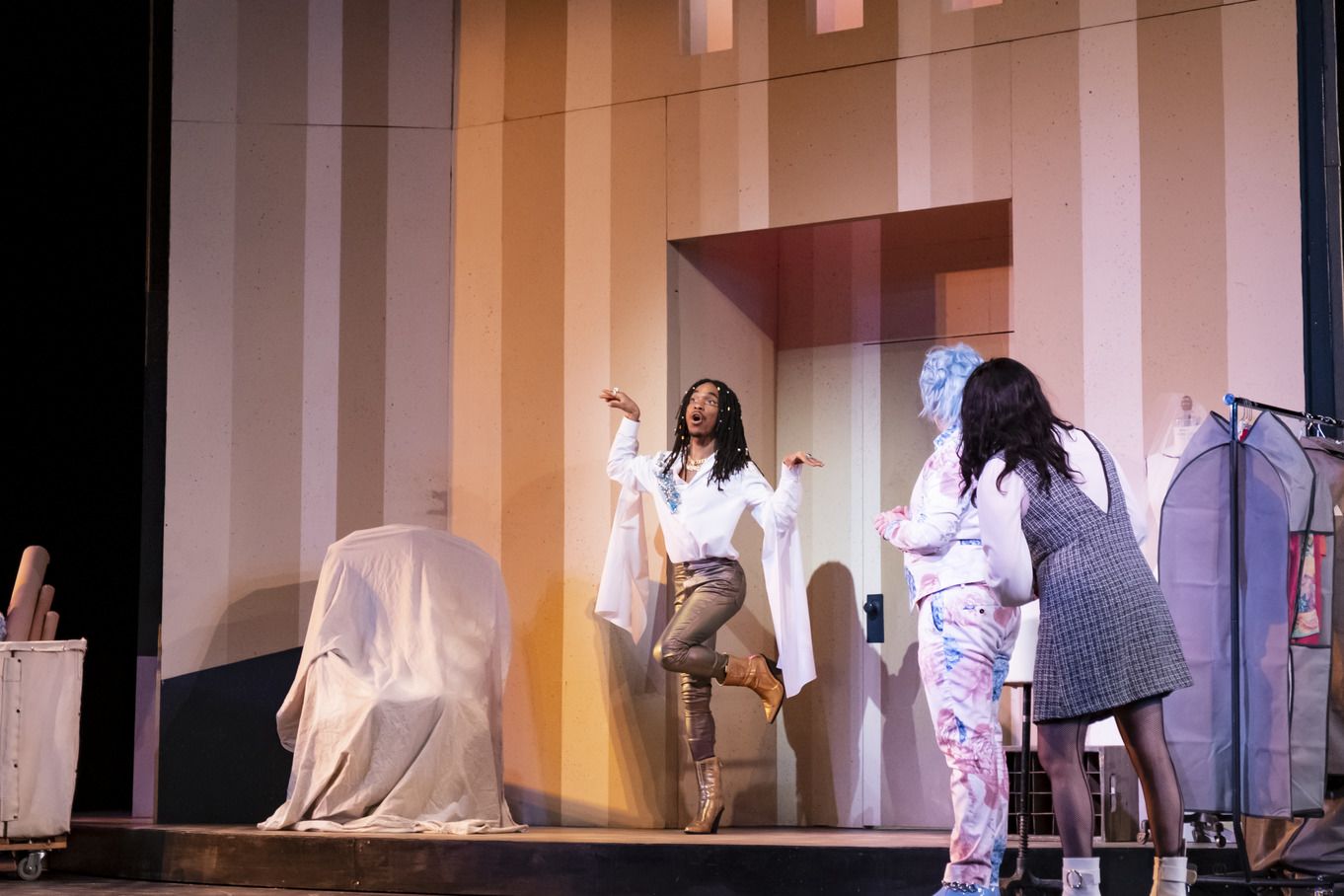
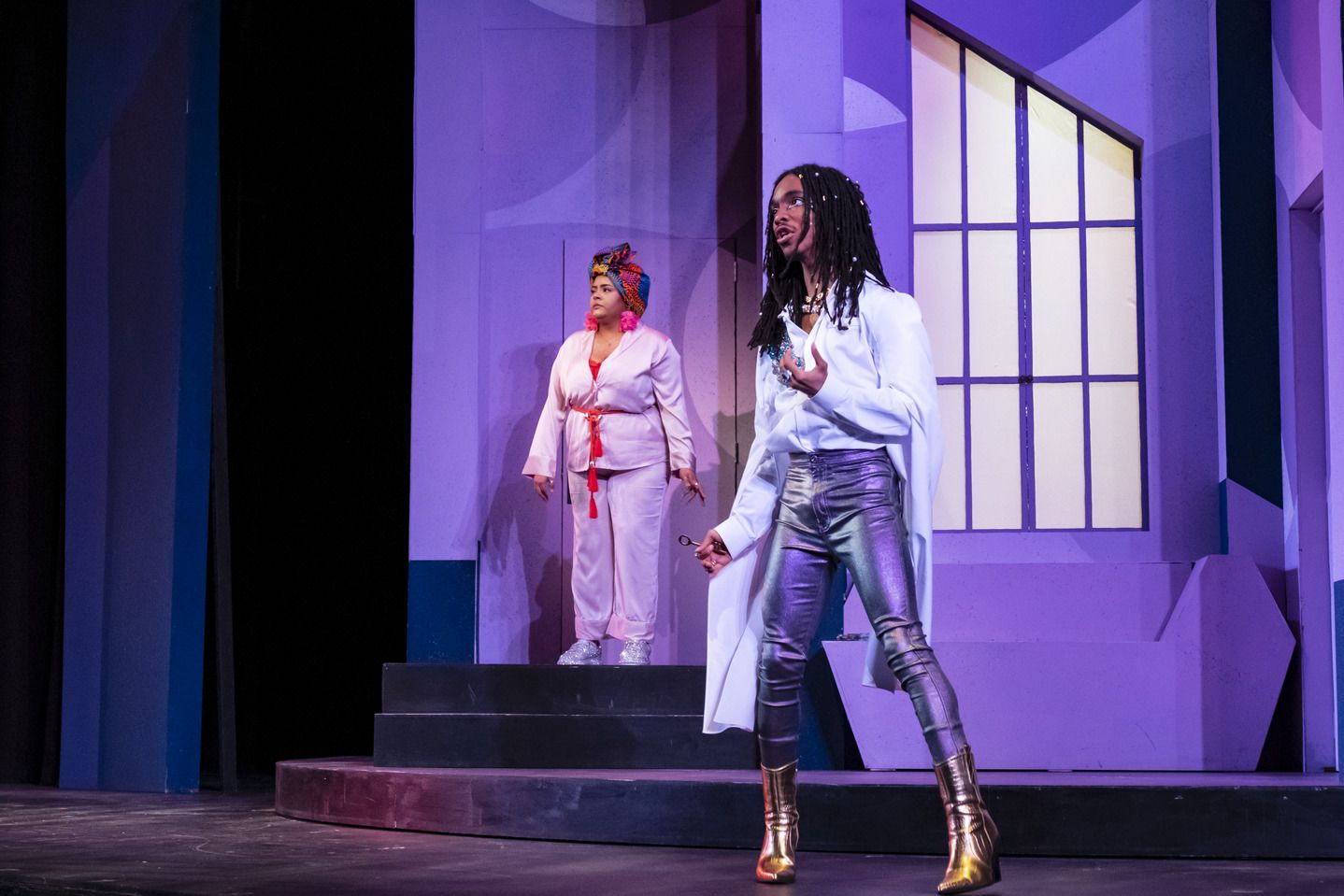
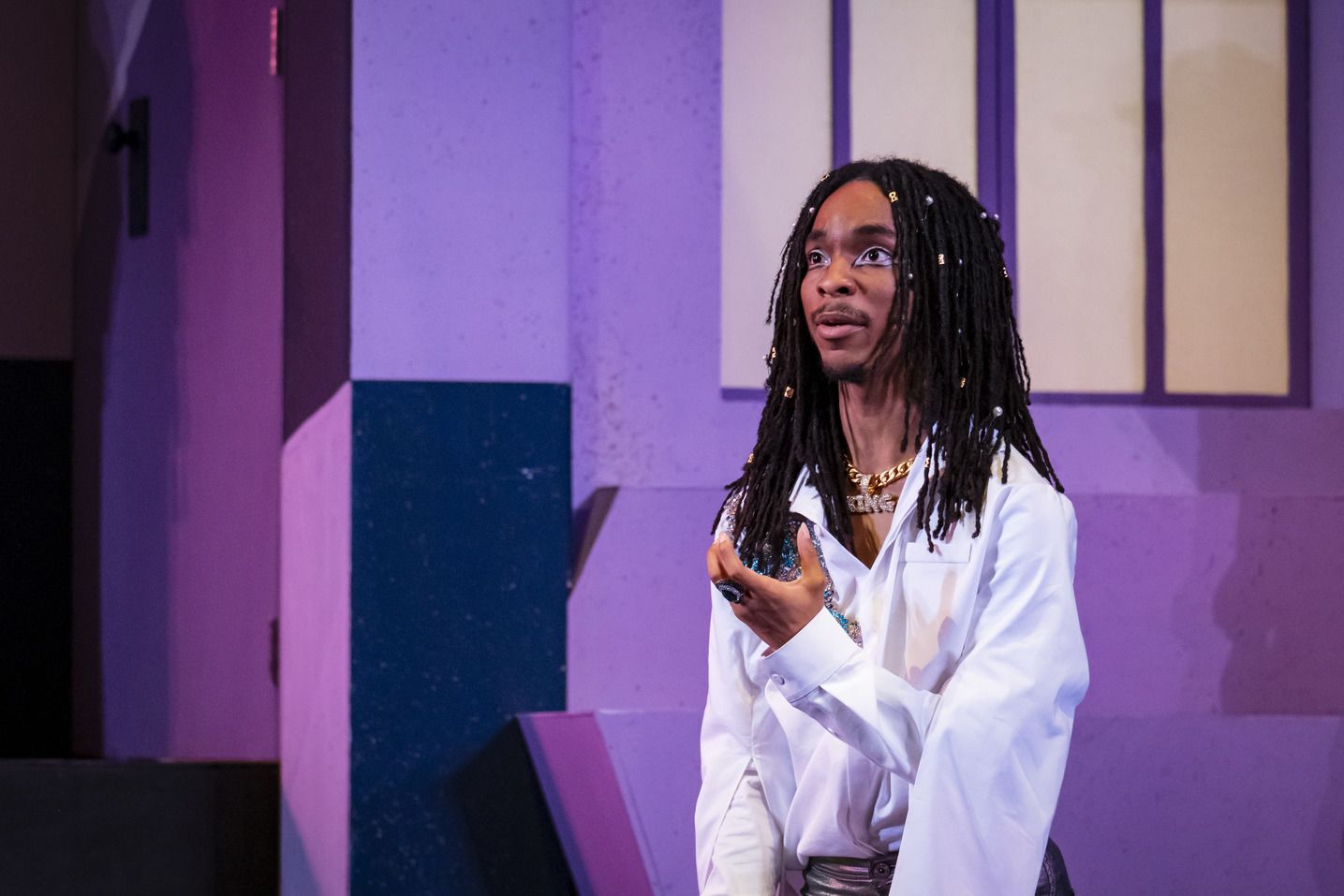



“The Count we cast is a nontraditional embodiment of the character. We wanted to make a world built around this compact, flamboyant, beautiful human. I came up with the idea that this production should feel like a fashion house based on the Count character’s eccentricities so that everything feels like it comes out of him and his tastes. That concept of fashion house elevated the theatrics, allowing us to create a world that looked fresh but was rooted in archaic rules and structures.”
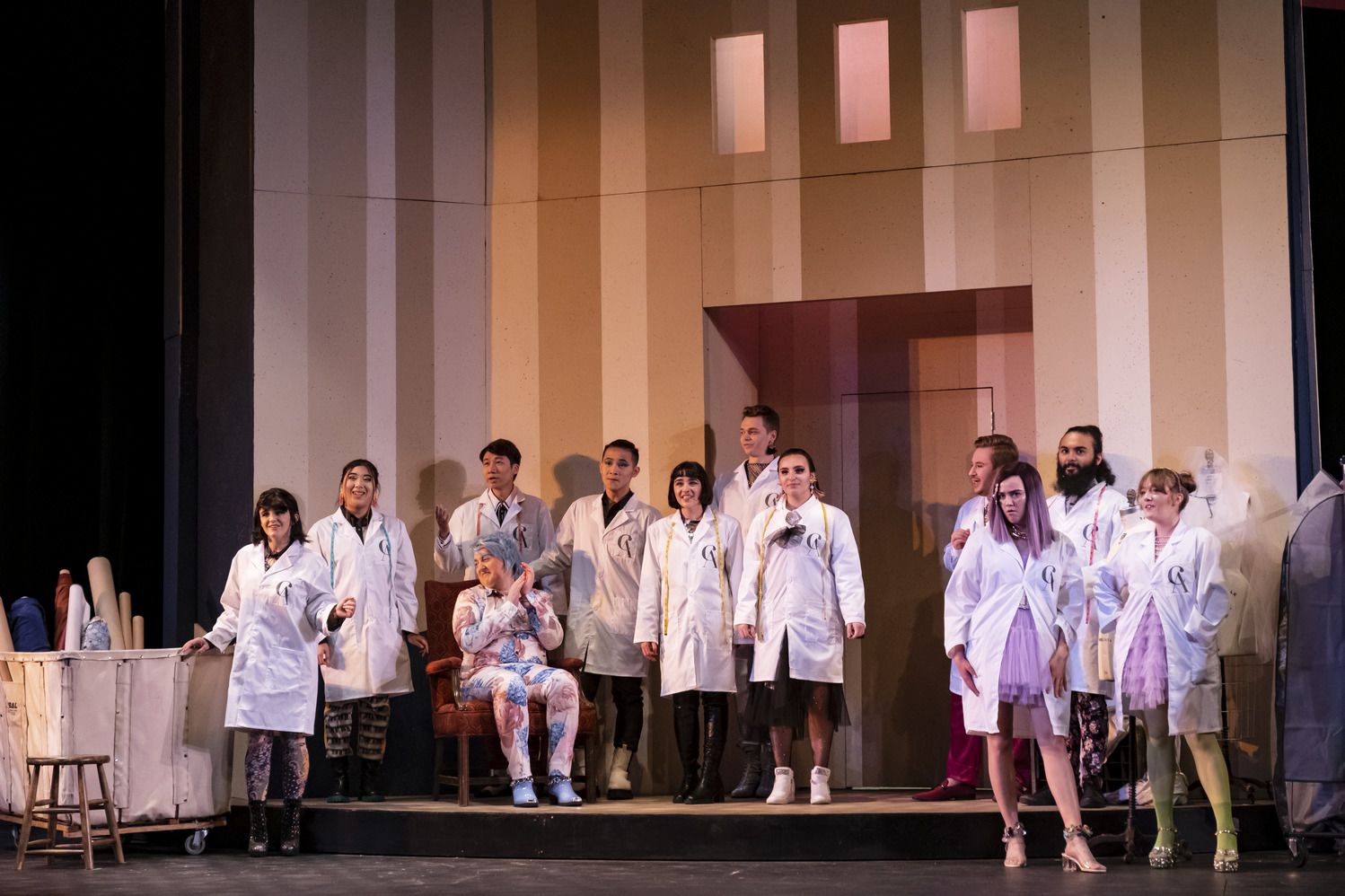
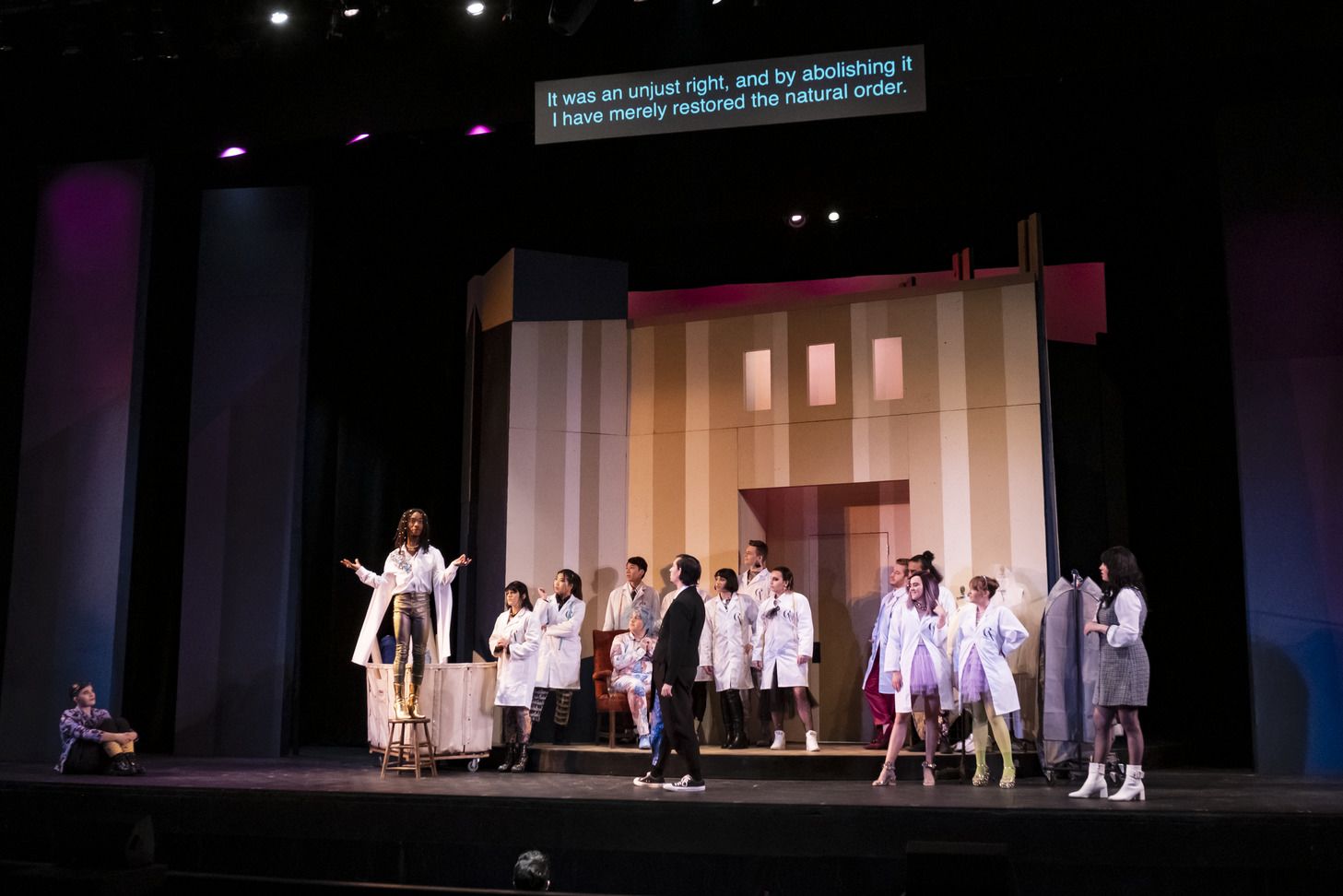
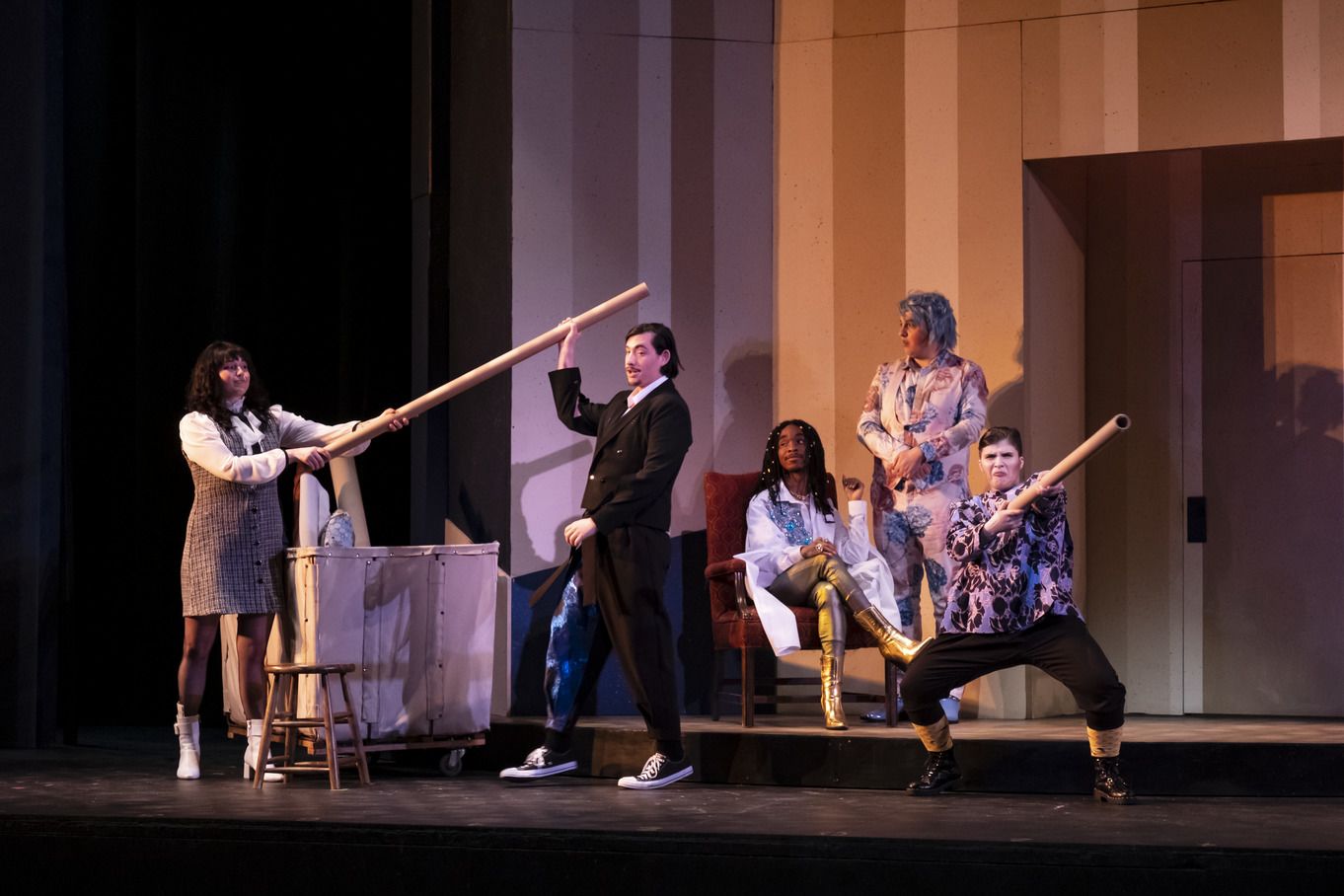



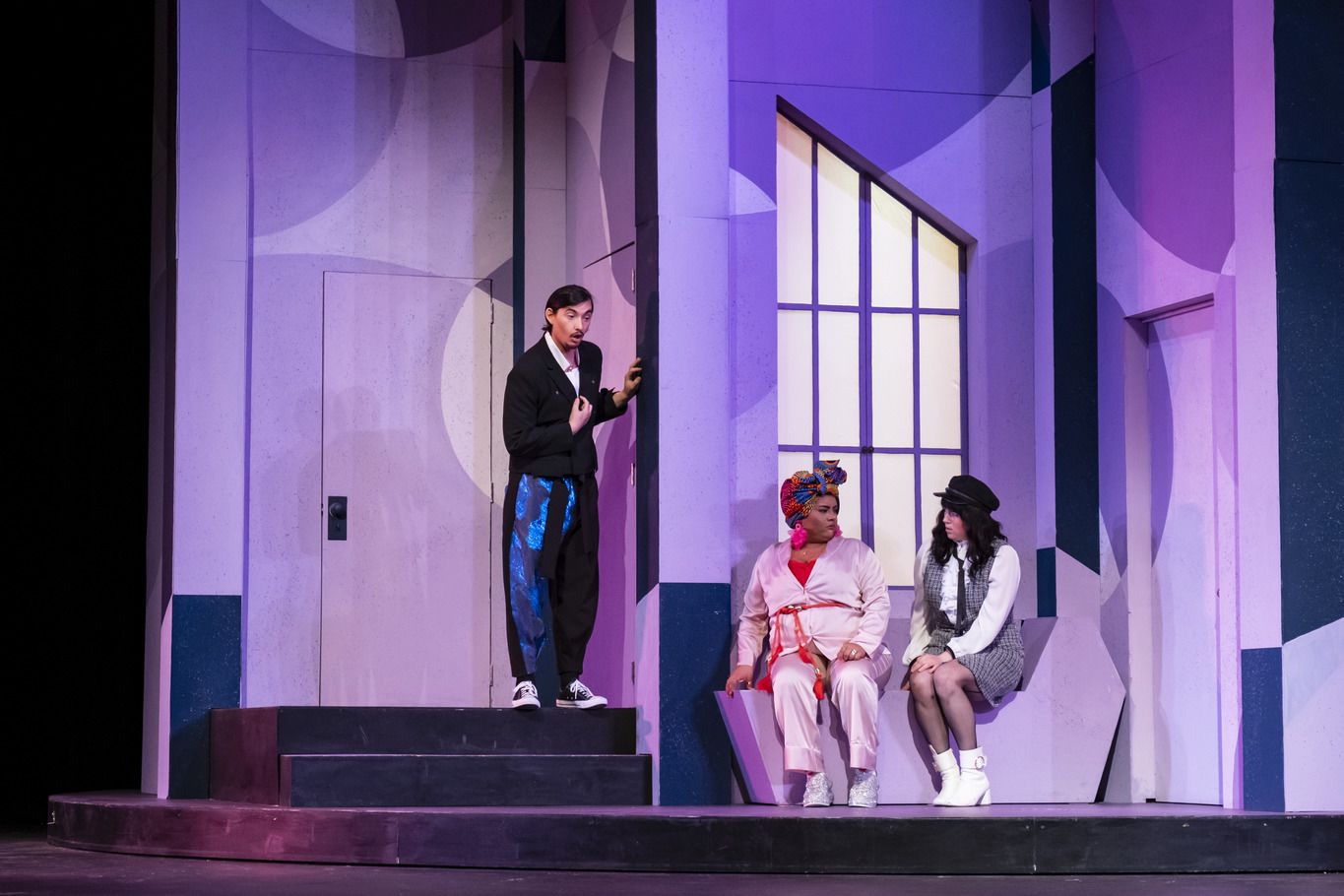
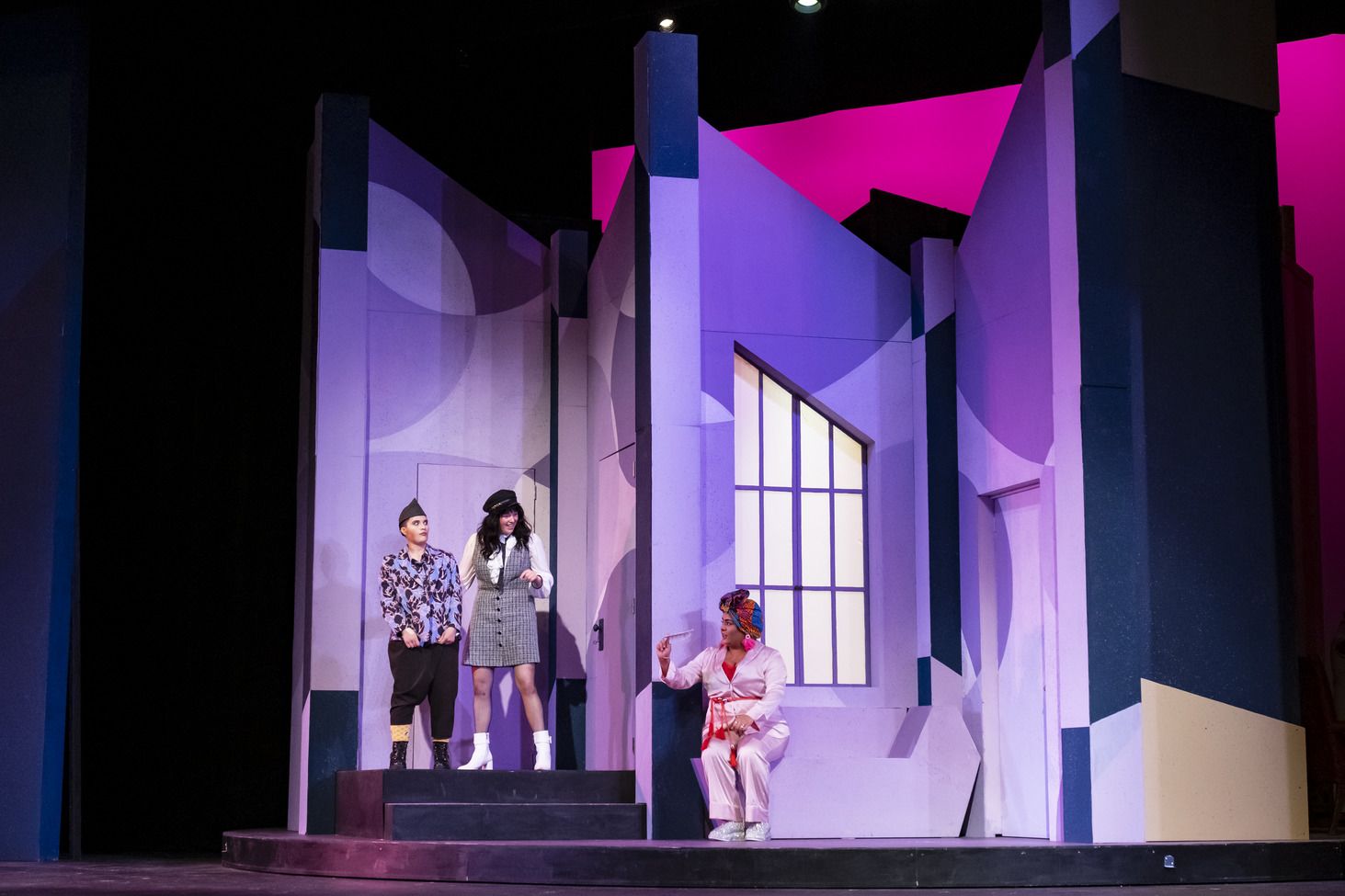
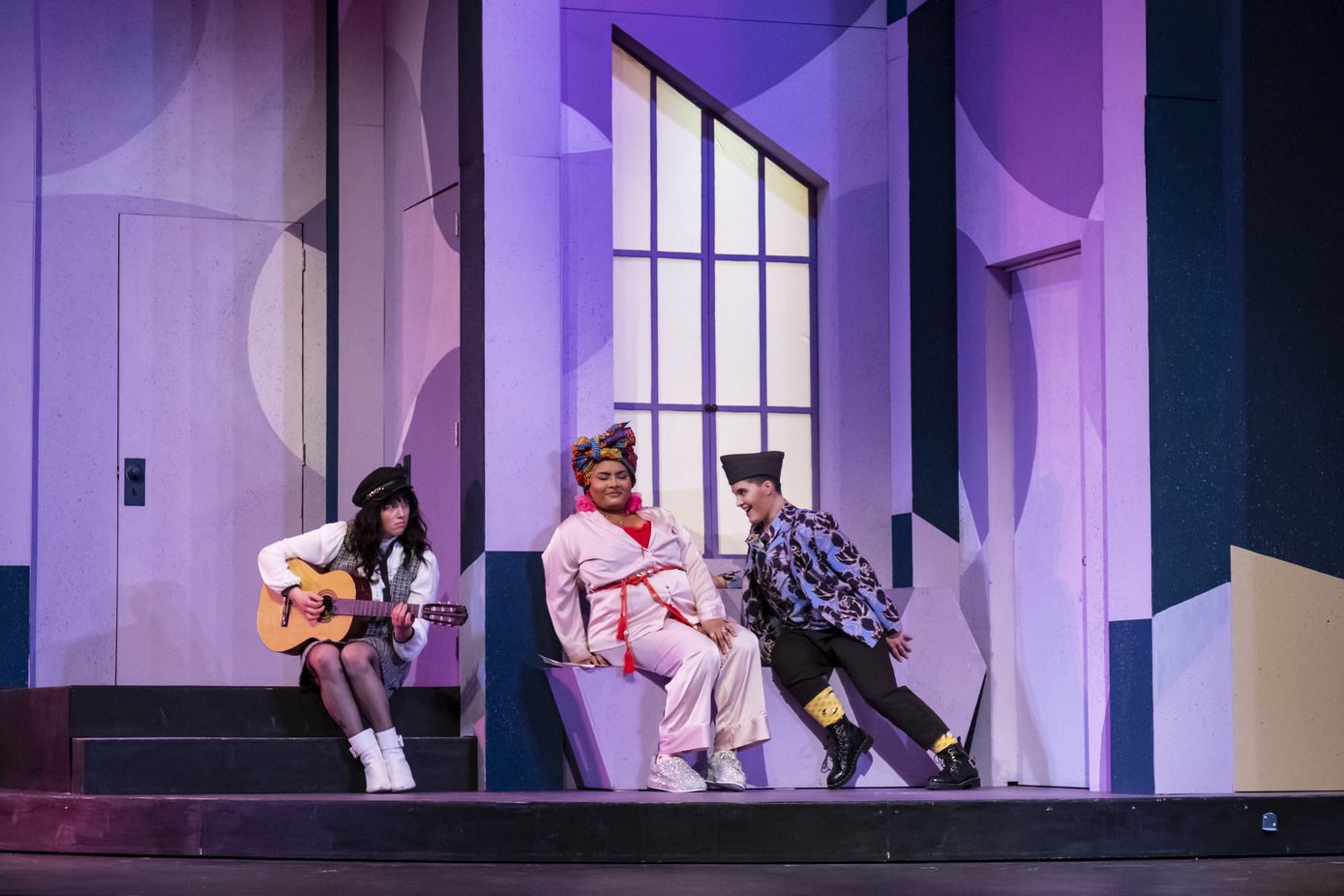
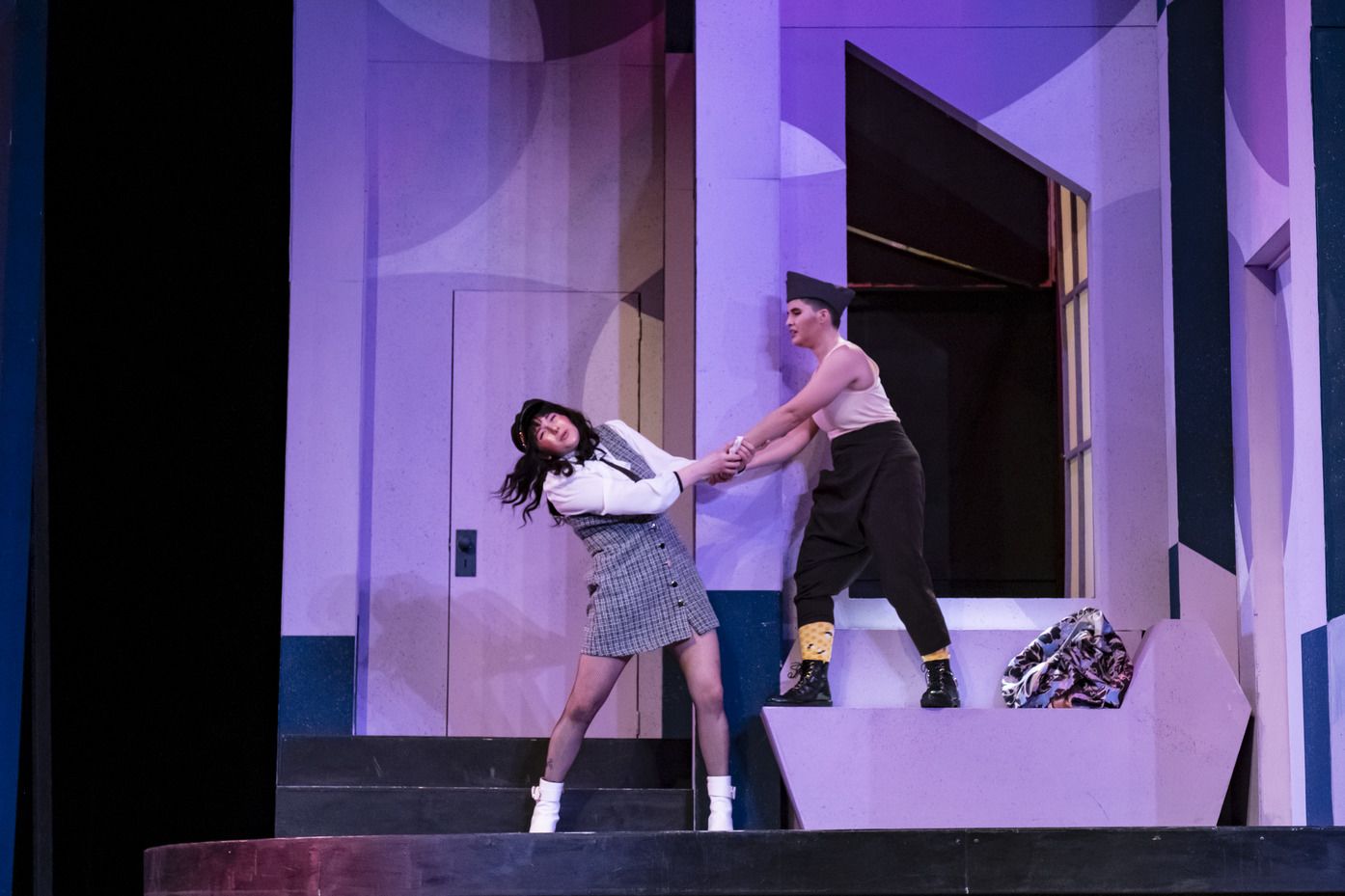




“In our production, my role of Susanna took a ditzy persona and turned her into a smart, cunning woman. With this fresh take on the character, I had to build from scratch, making the role my own. I couldn’t fall back on how Susanna is portrayed in other productions. This role was a huge opportunity. To have the experience makes it so worth it to be at Temple.”
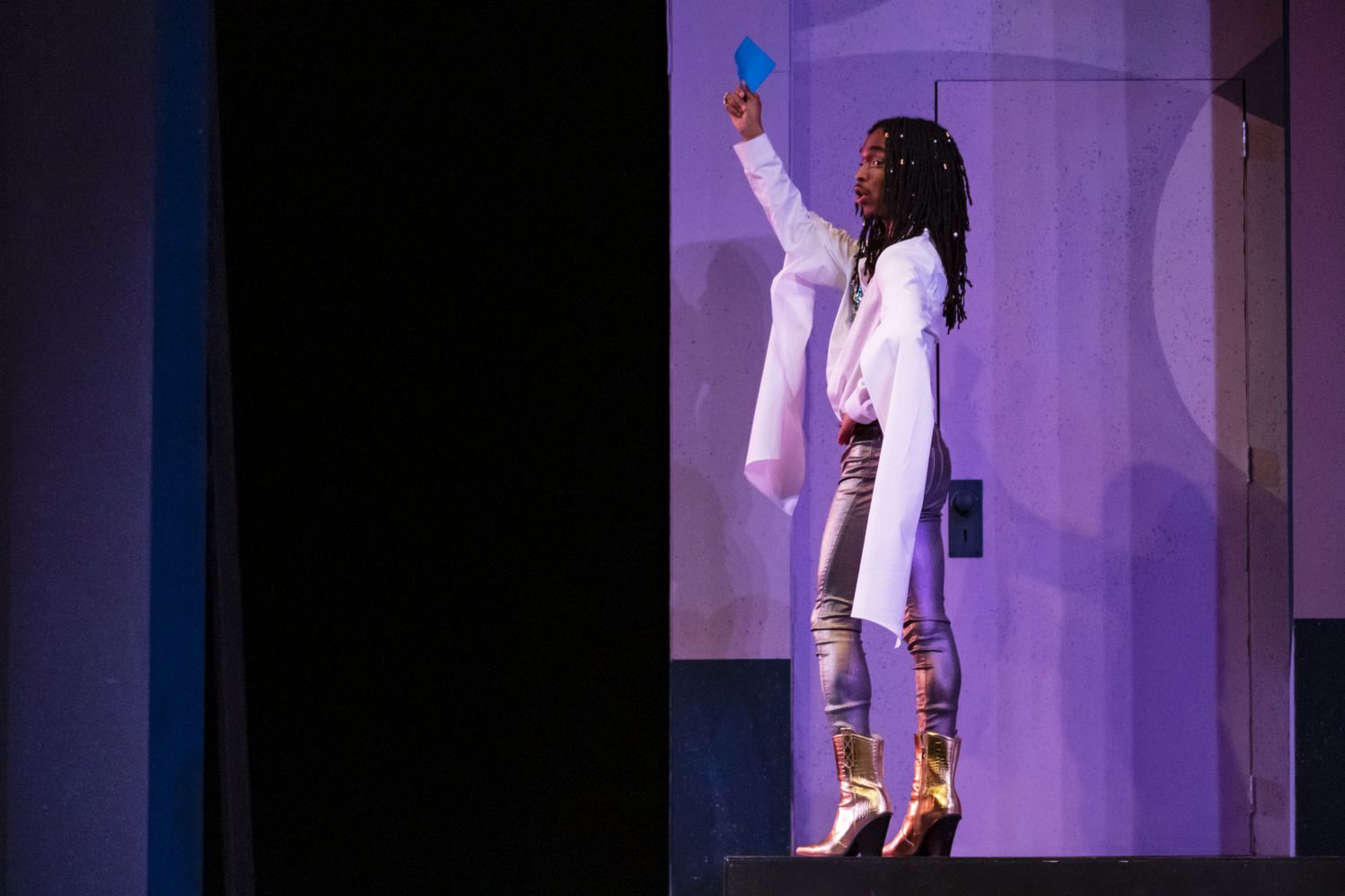
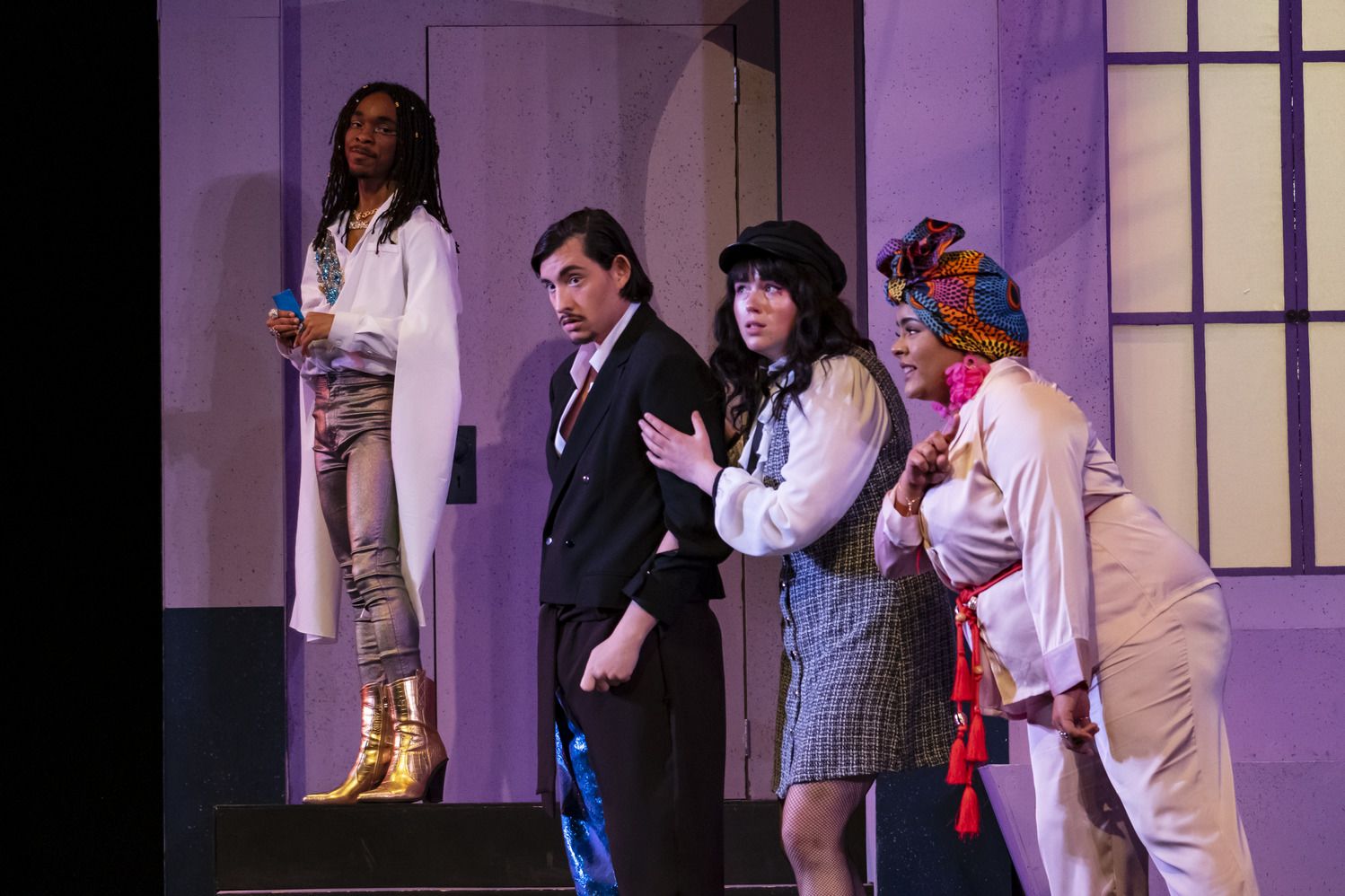
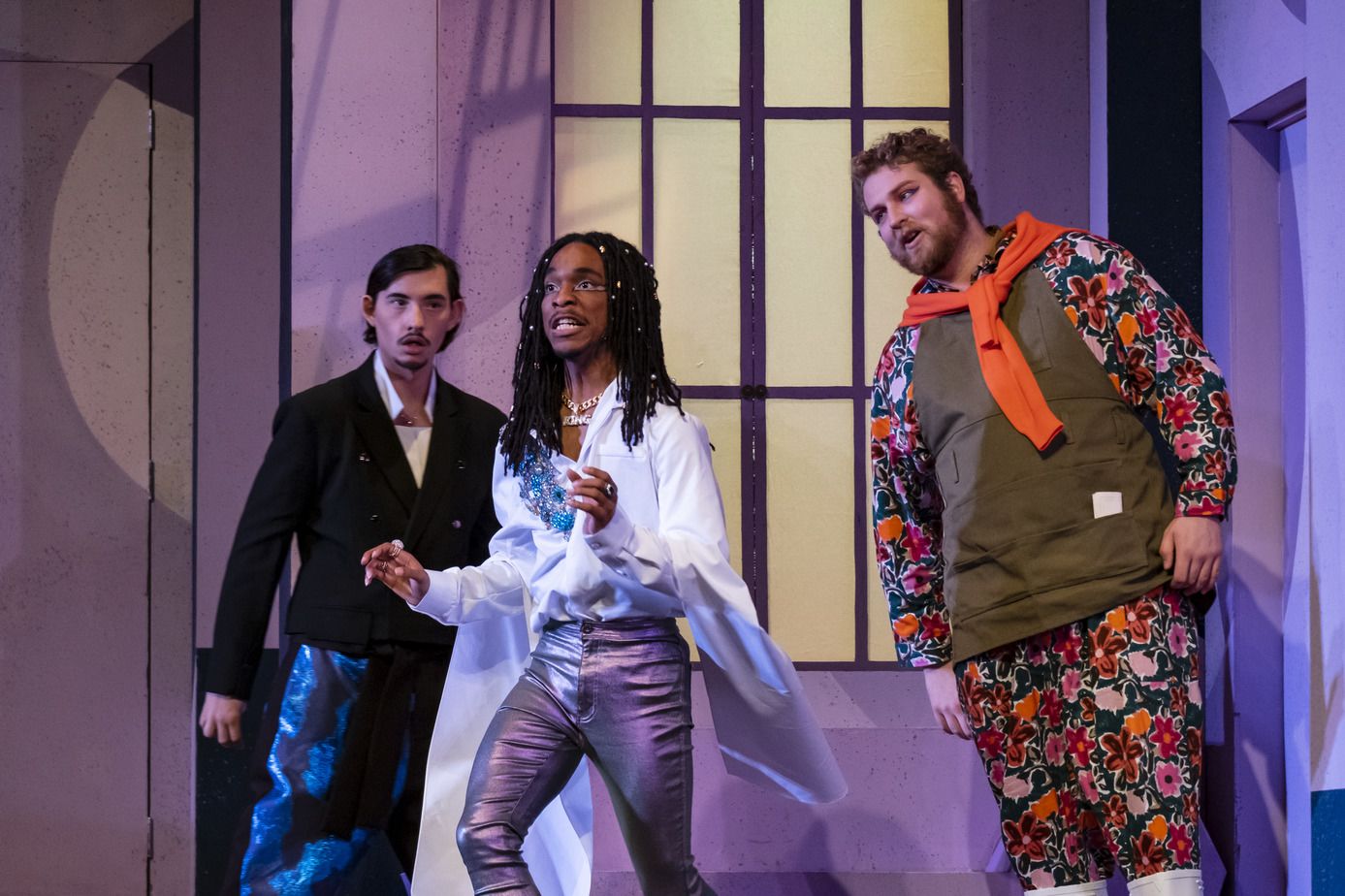



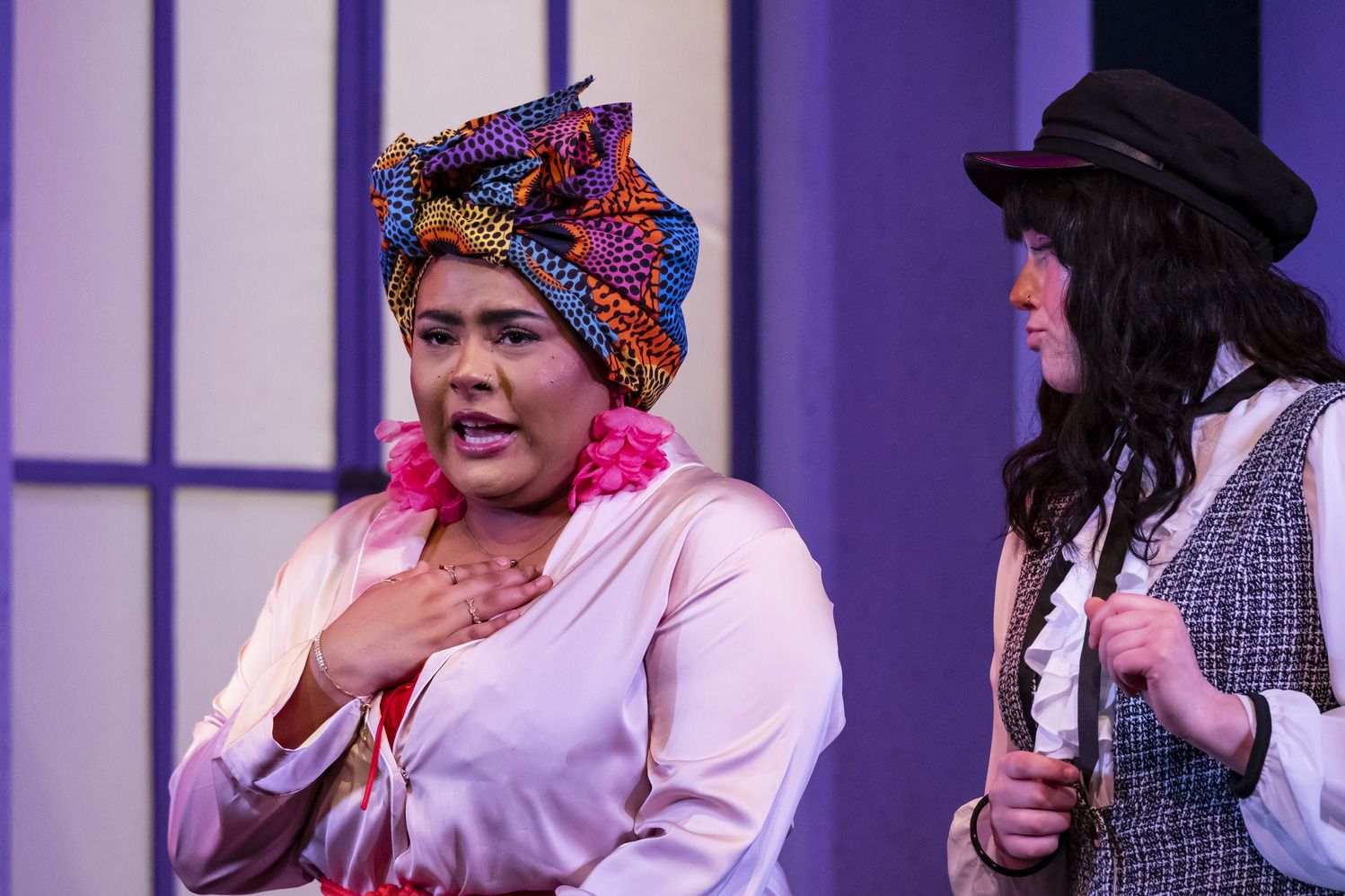
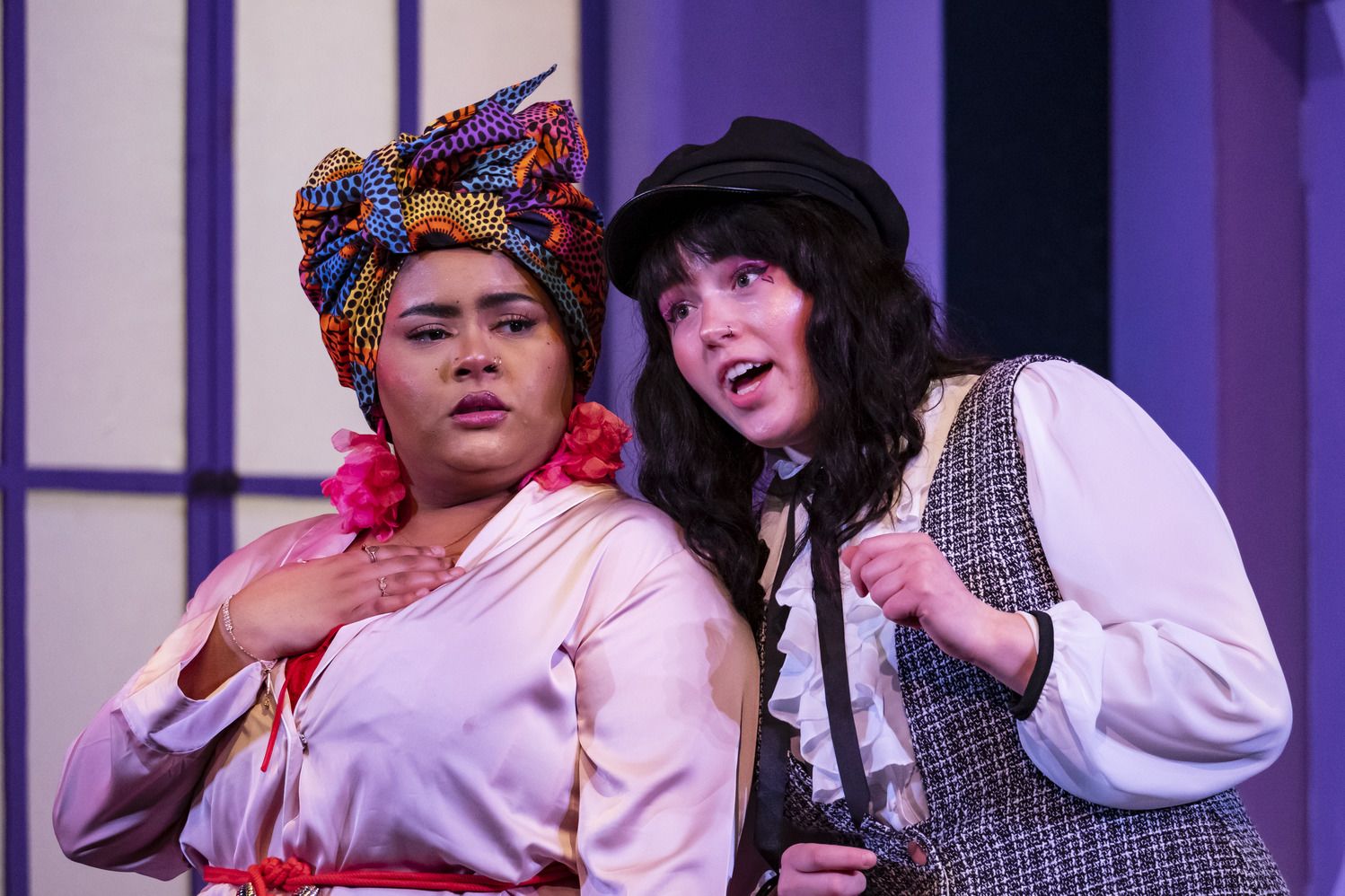
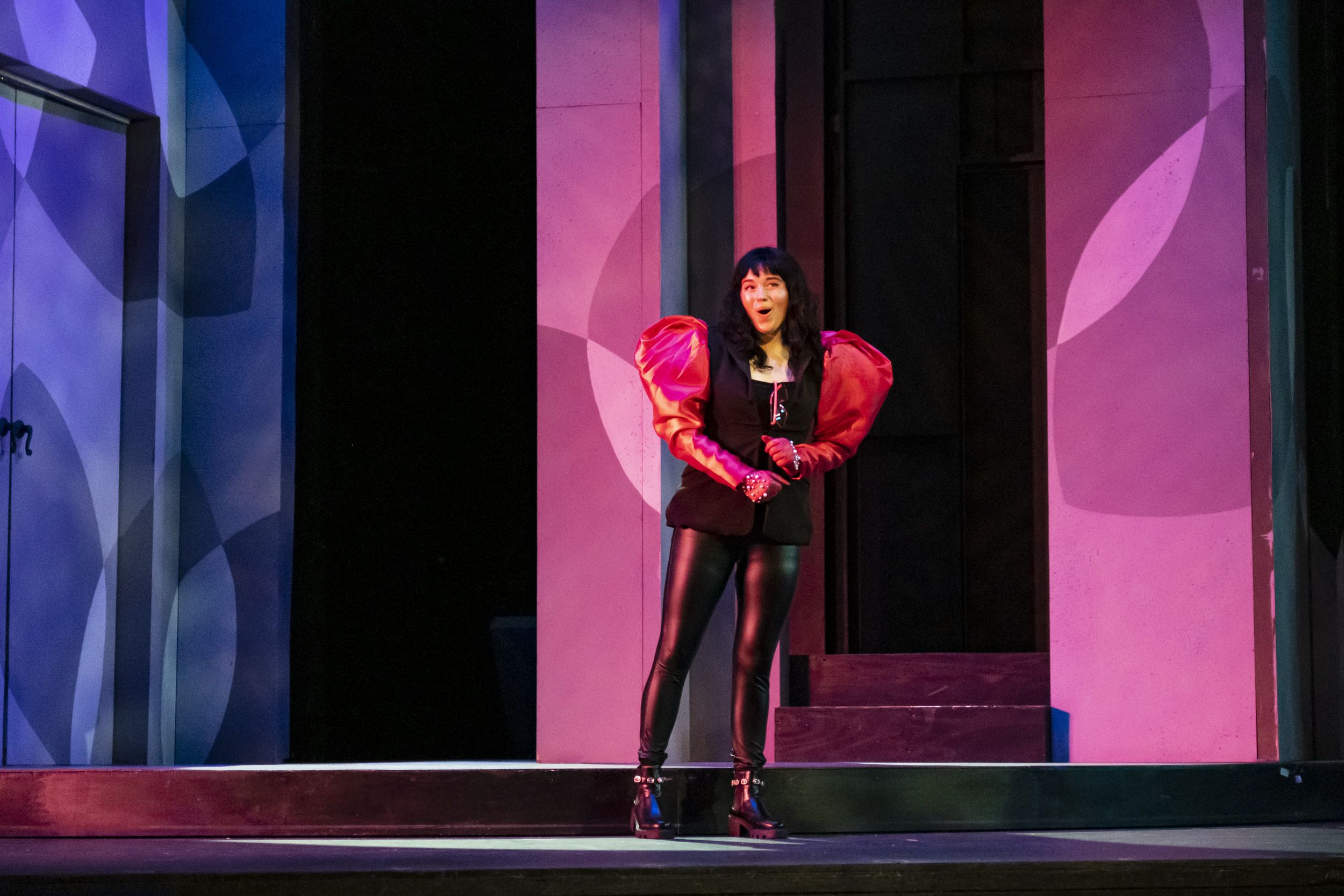



“My favorite part of this opera is the tunes. The audience recognizes a lot of the songs whether from a car commercial, The Shawshank Redemption or another cultural reference. I don’t understand how one opera can have so many bops. It’s just hit after hit.”
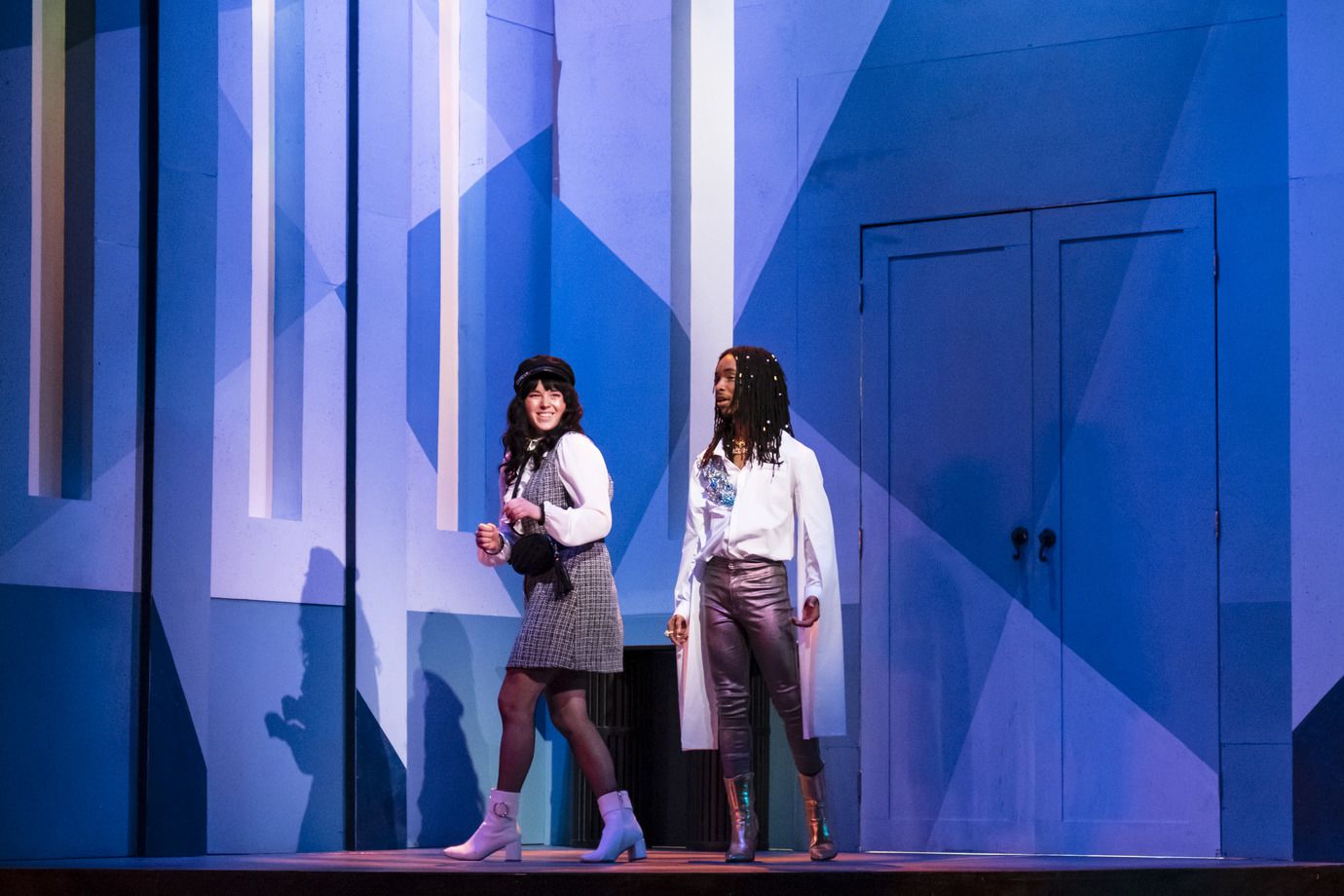
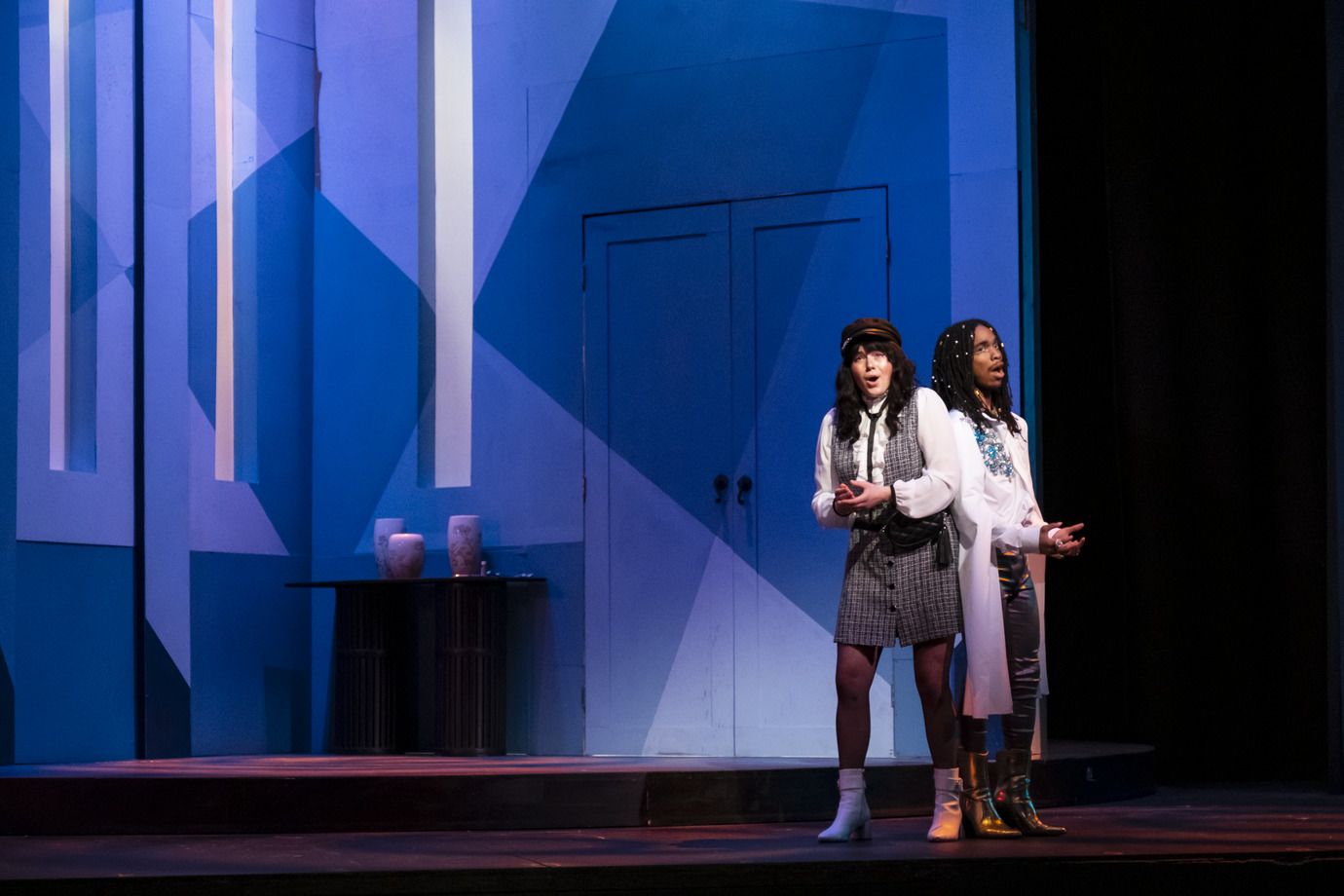
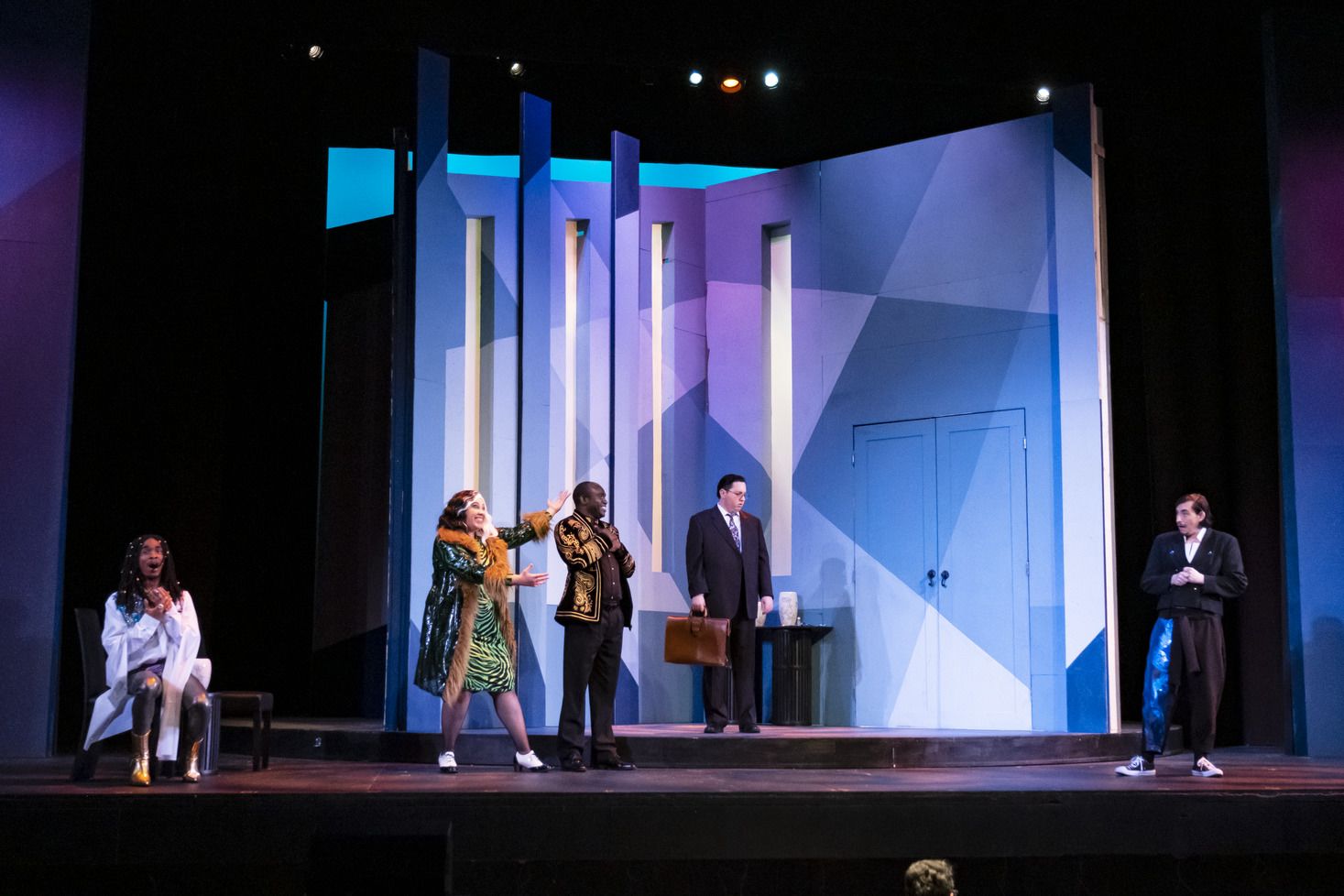



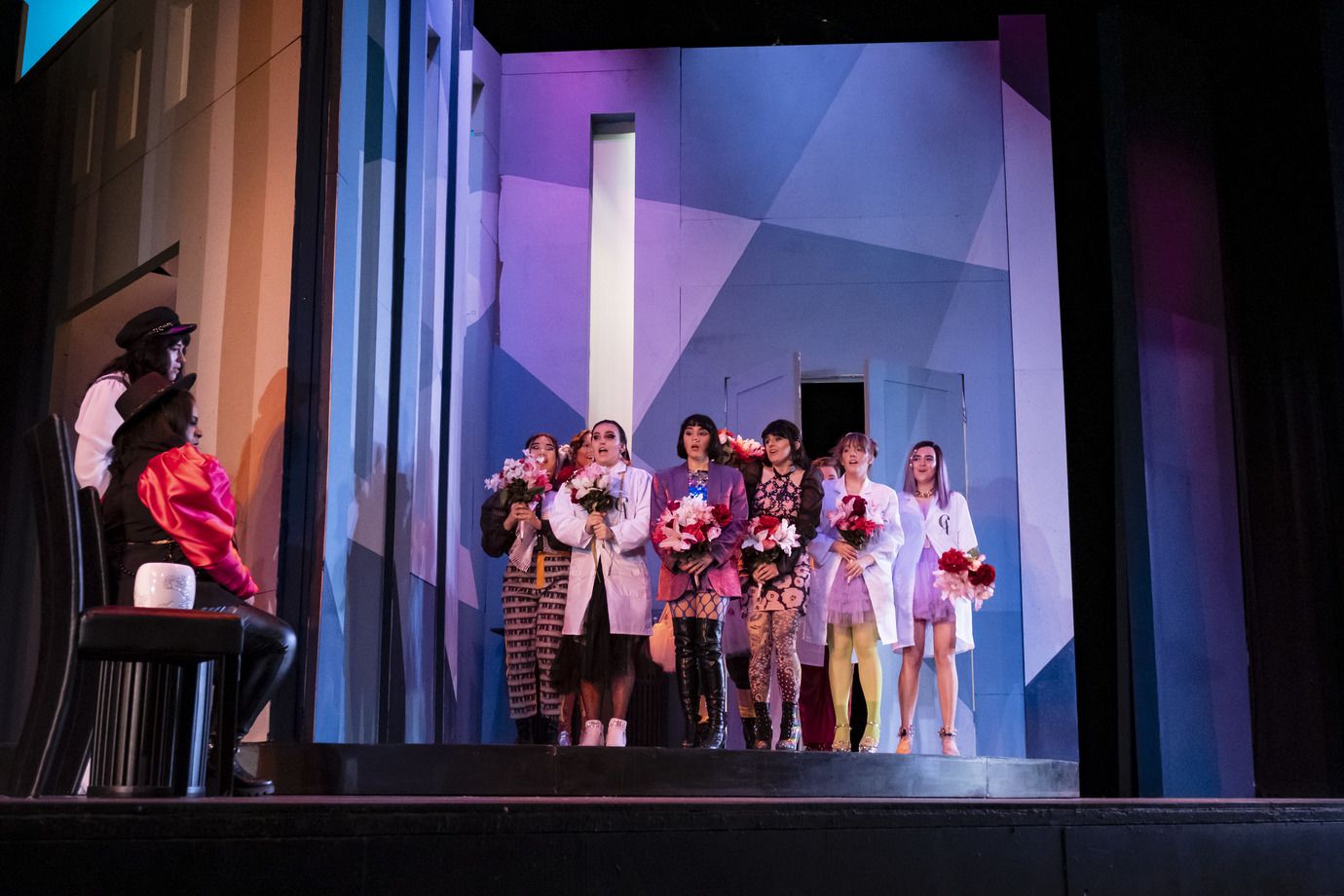
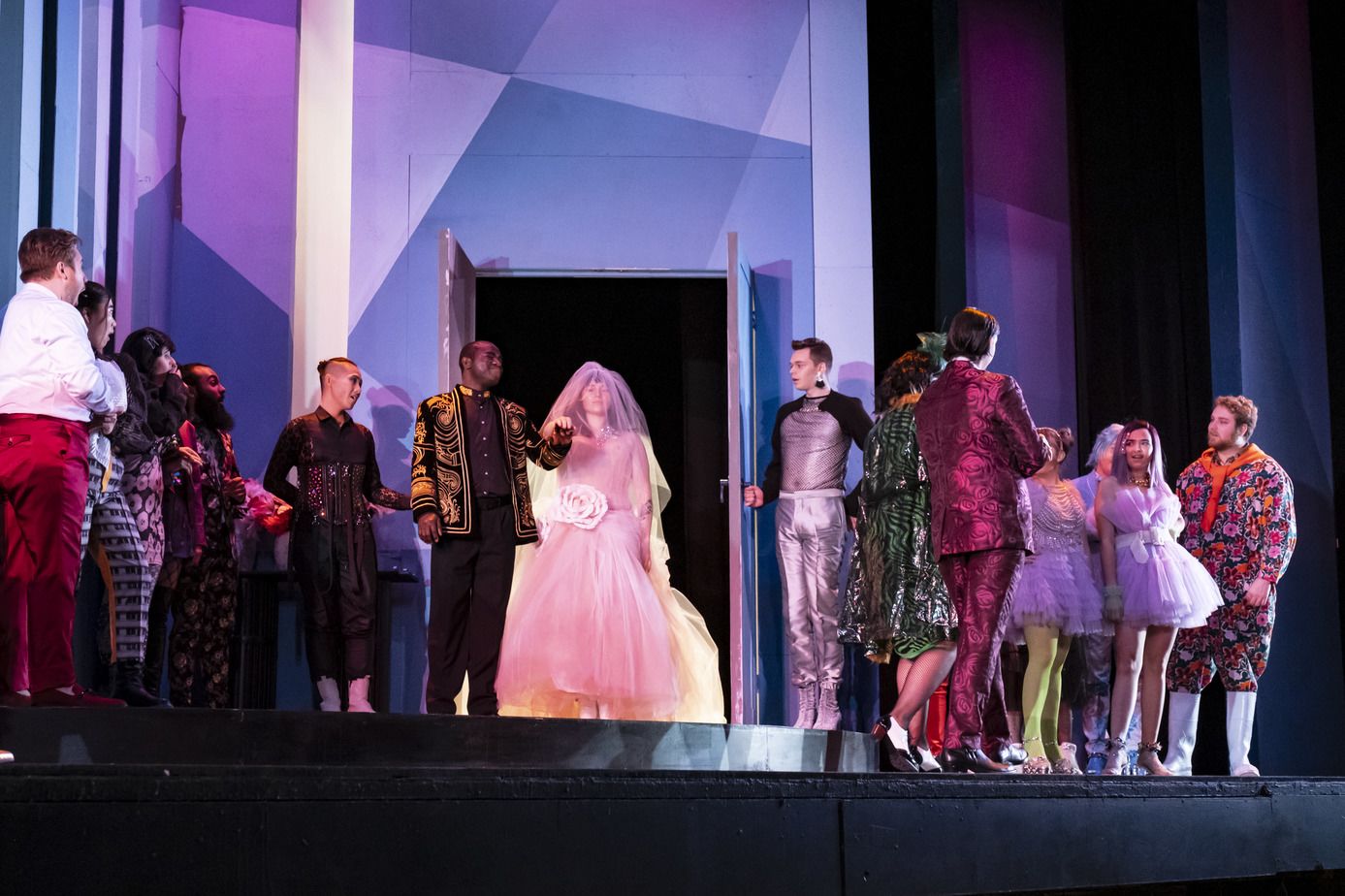
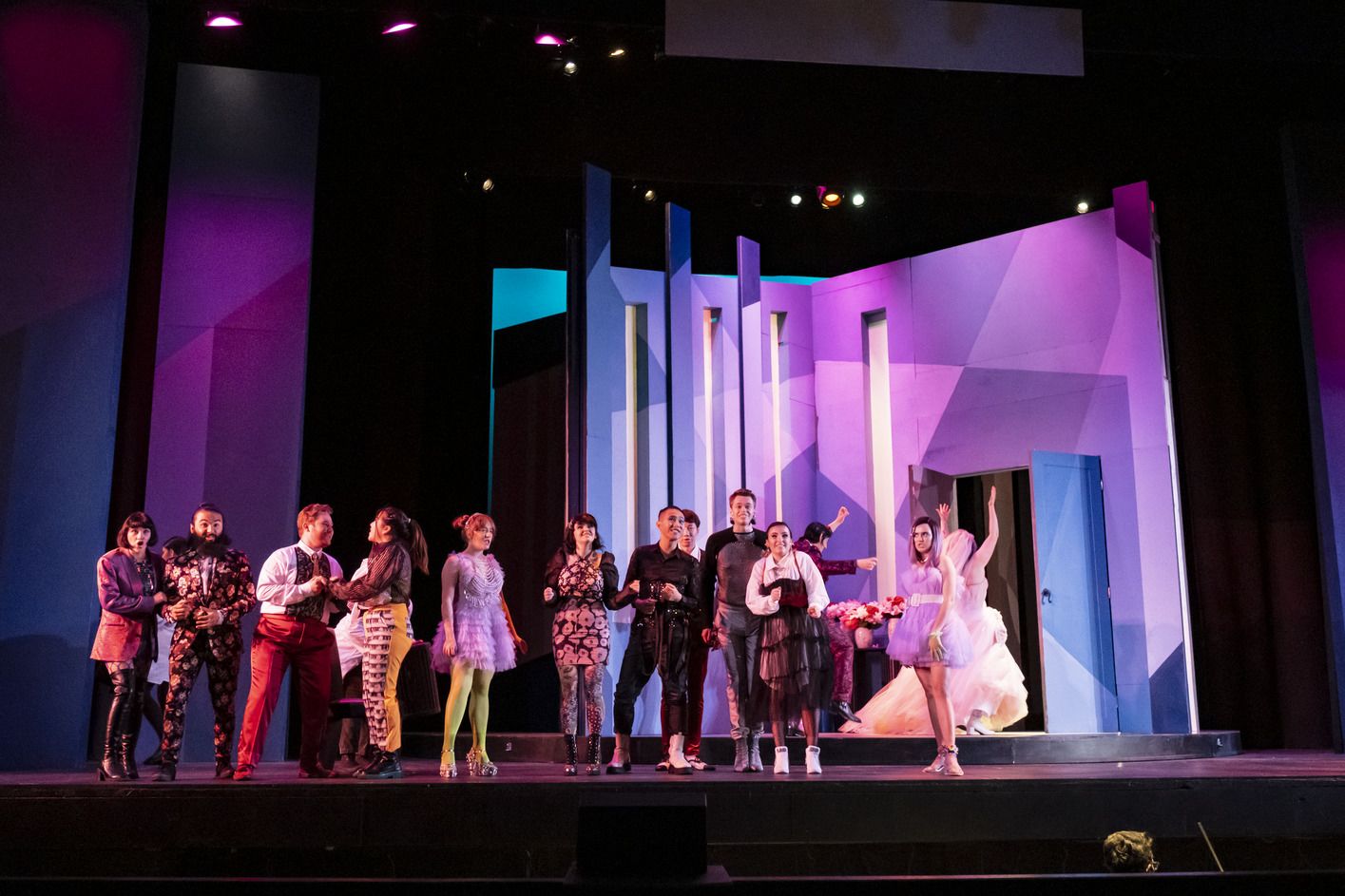



“I want to create a space that makes students better performers and personally invested in the character because if I get them invested the work is more believable and touching. By making them personalize it, everything they do is elevated.”
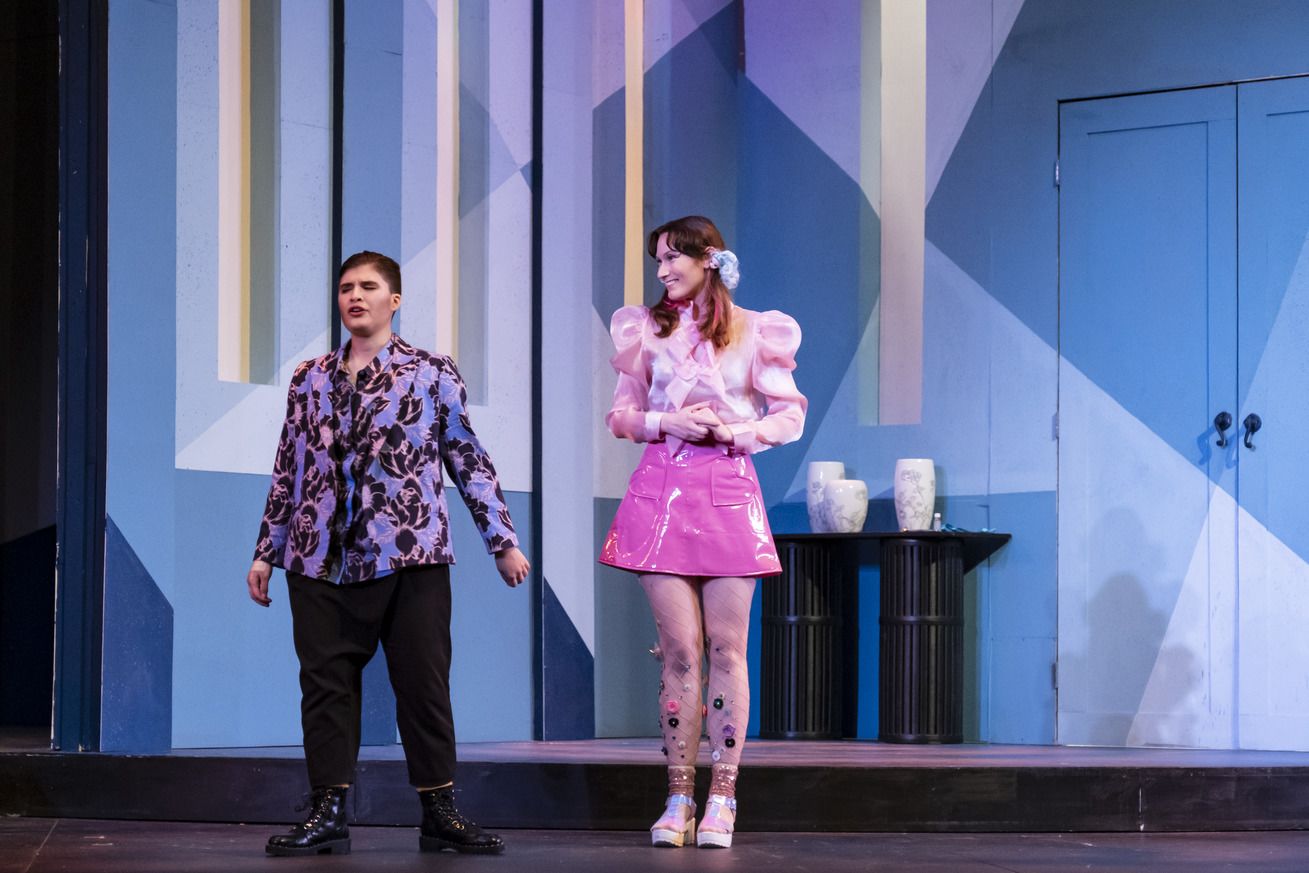
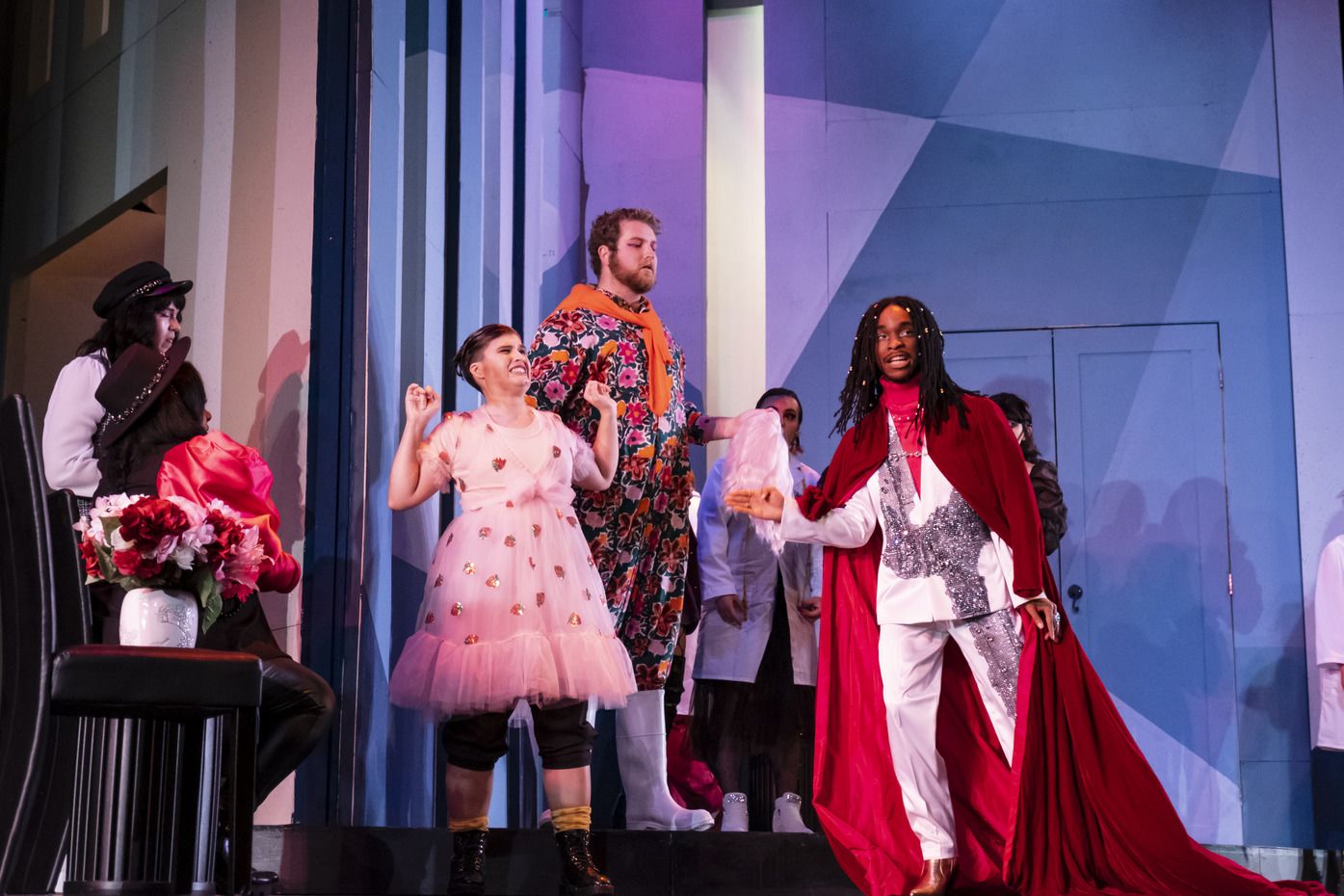
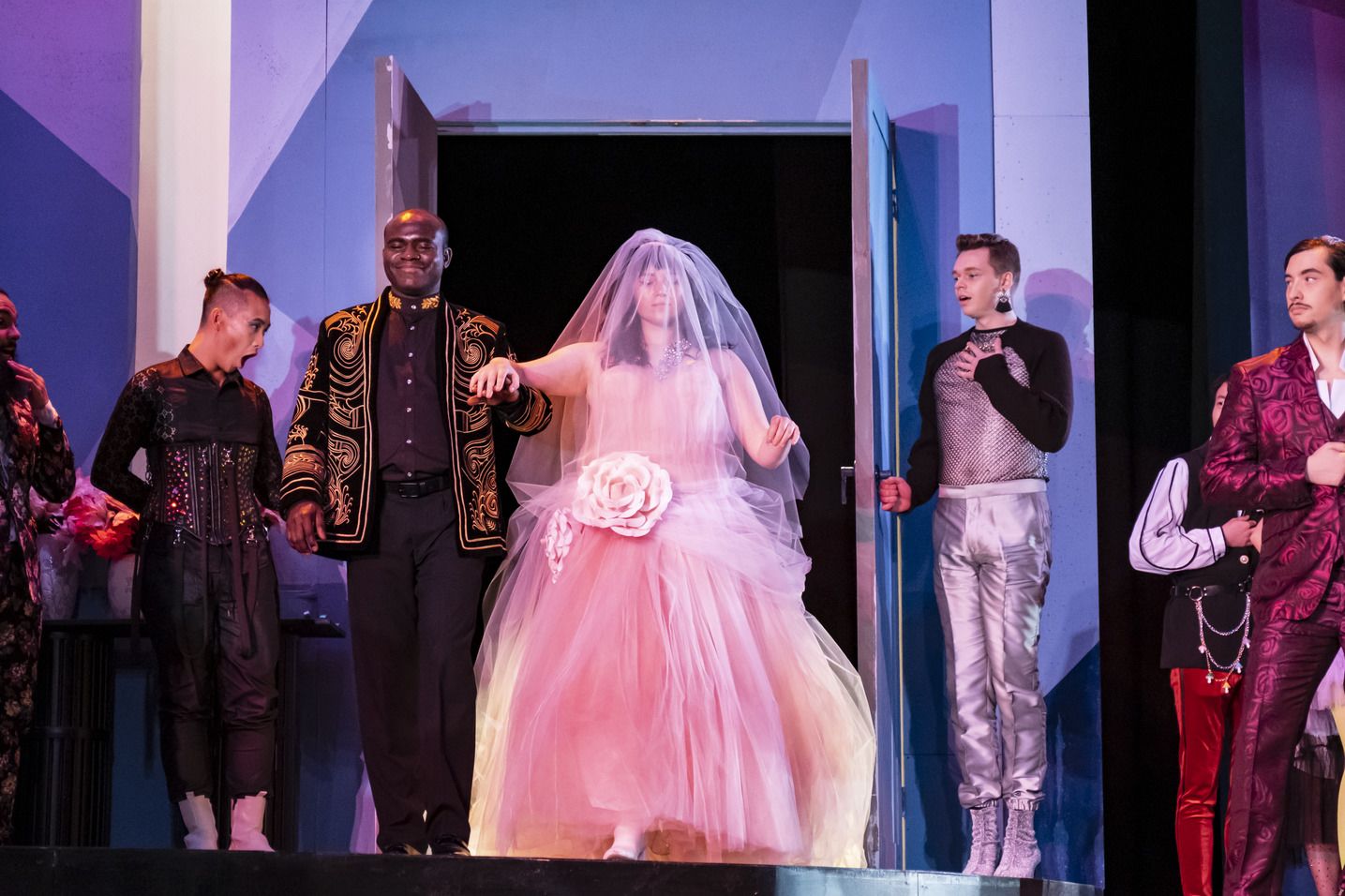
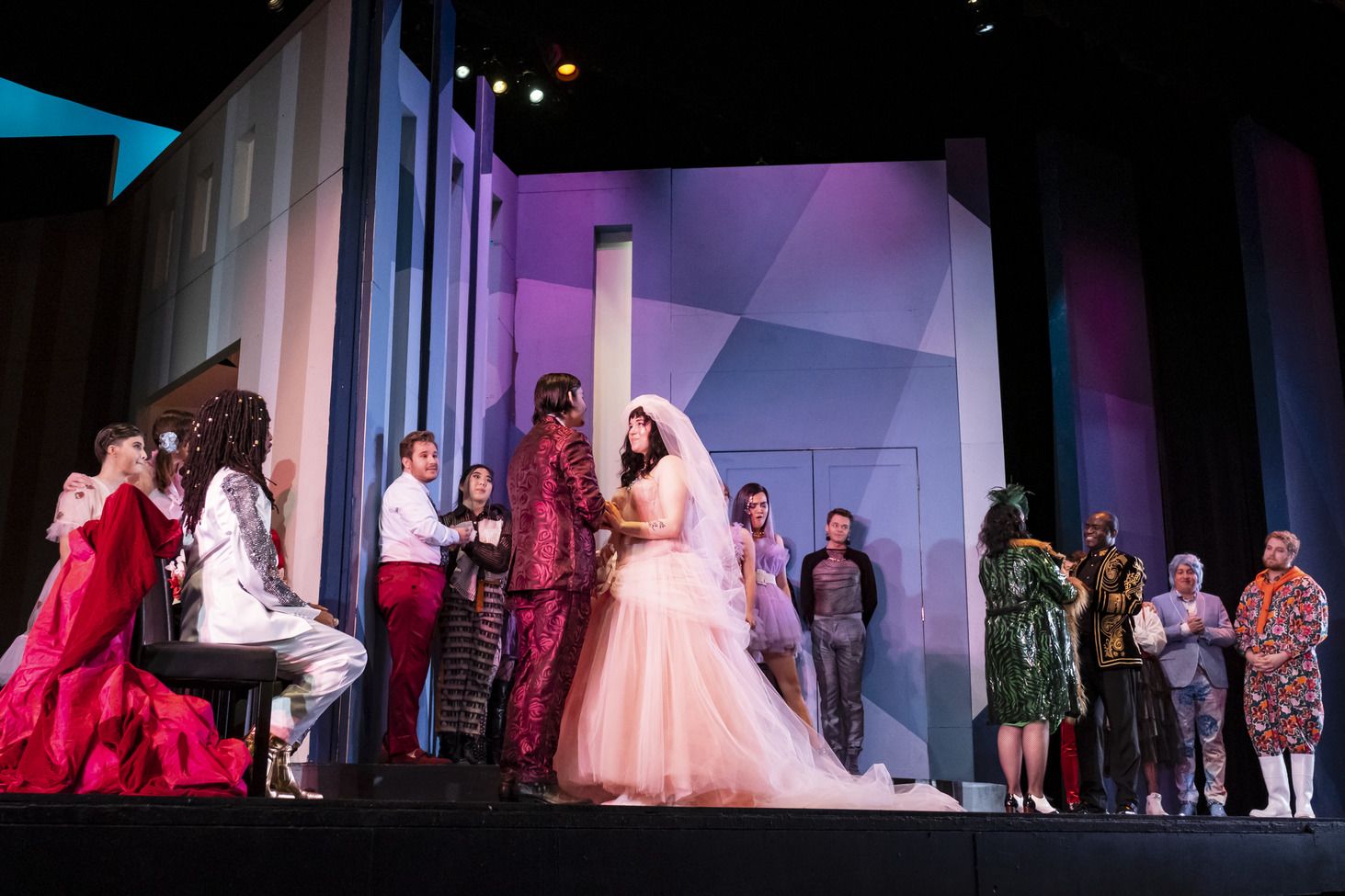




“For me, the magic of opera and theater happens somewhere five to eight minutes after go time, when there is this collective breath in the darkness and everyone takes a moment of silence before the story begins. This is the magic moment where we all have this nonverbal contract that we’re going to experience something together right then. It’s felt through the bones of the theater. That moment is awesome.”
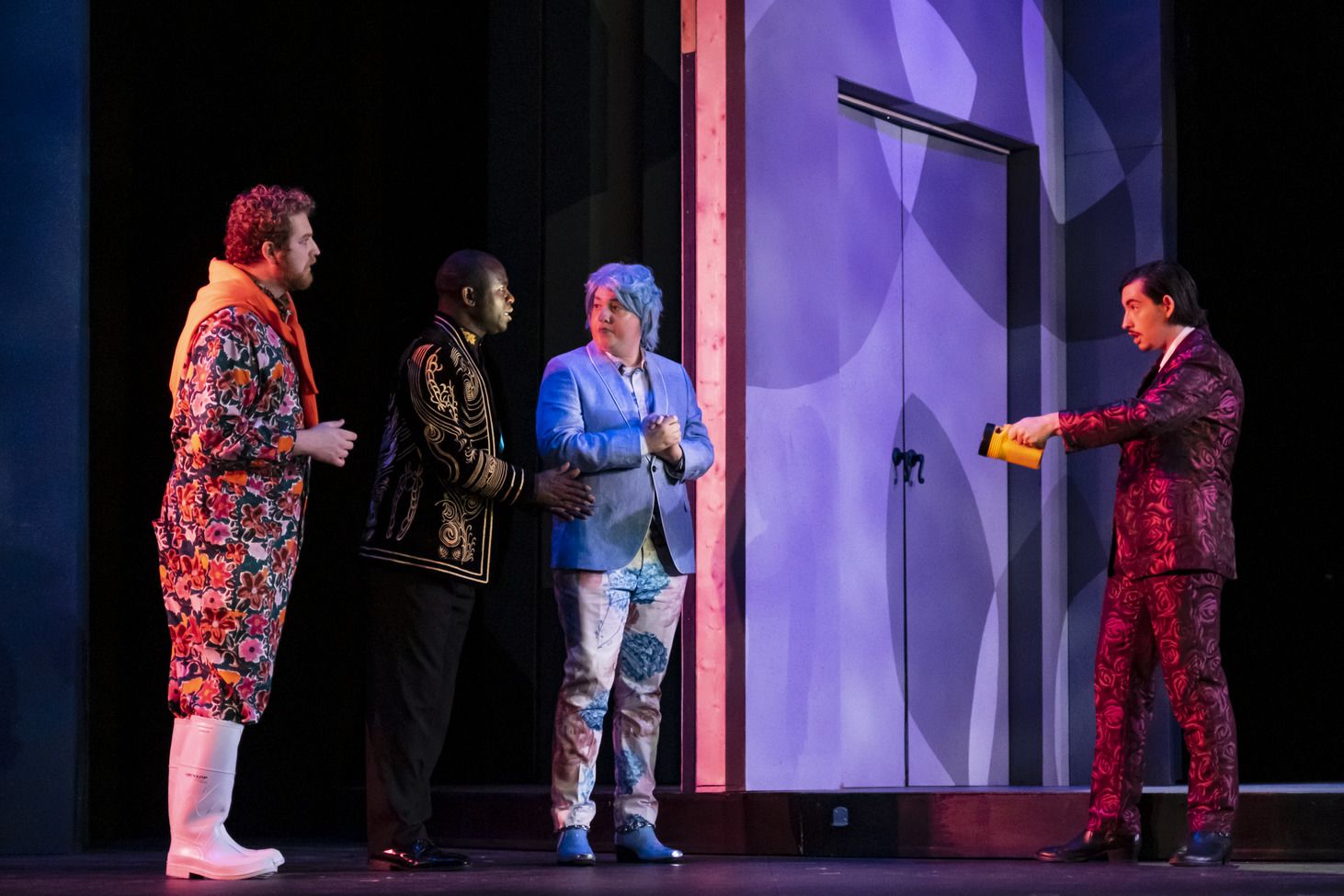
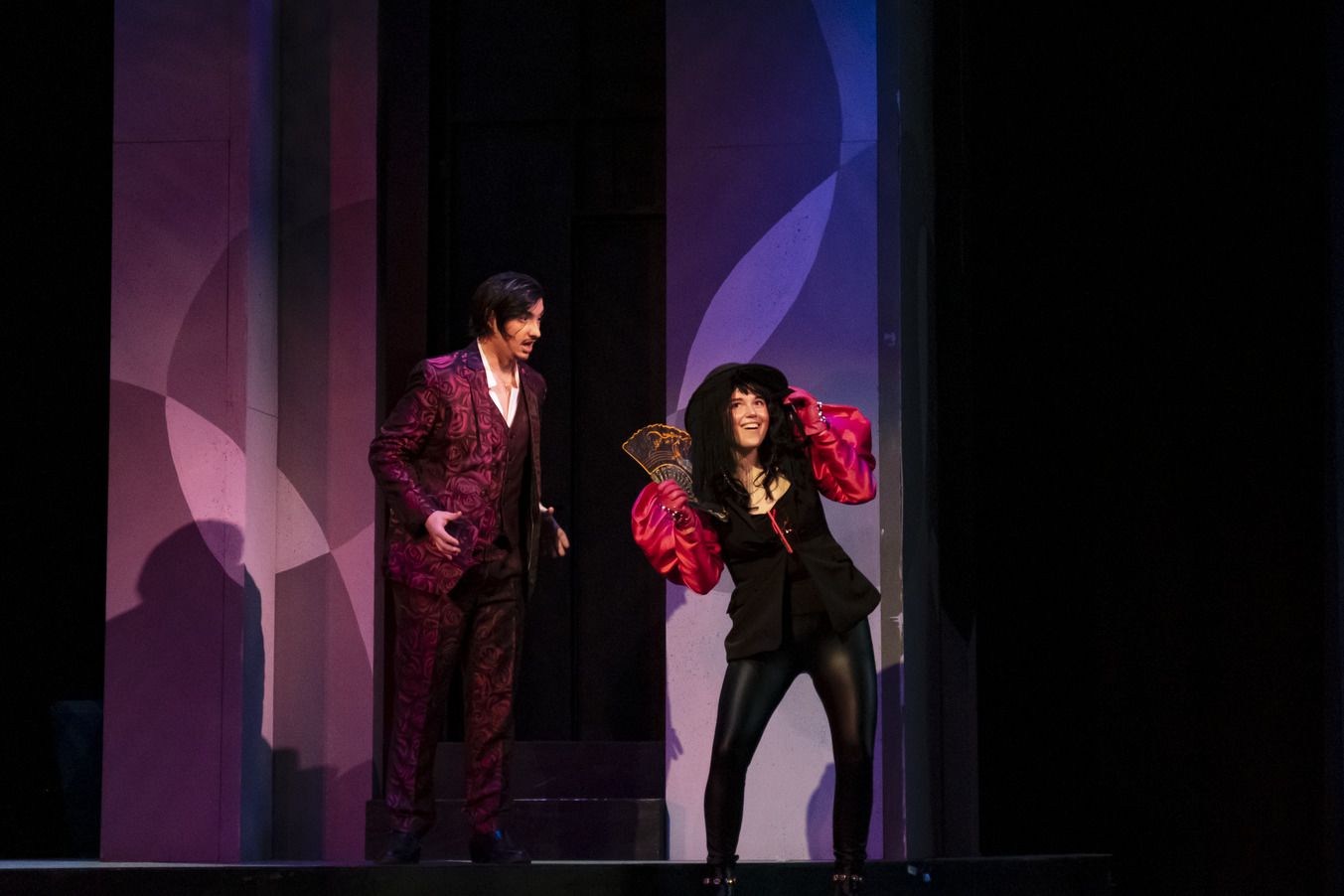
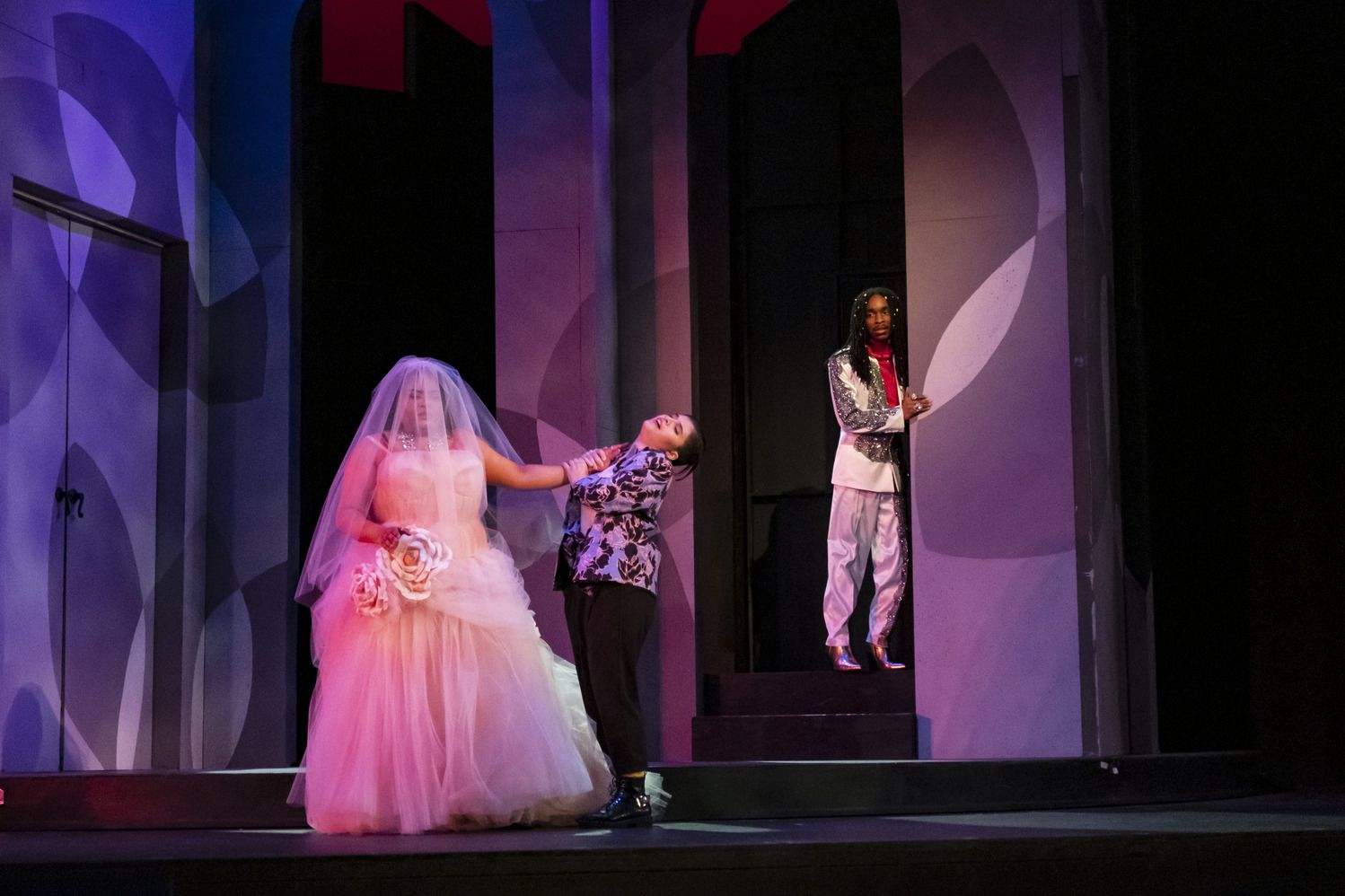
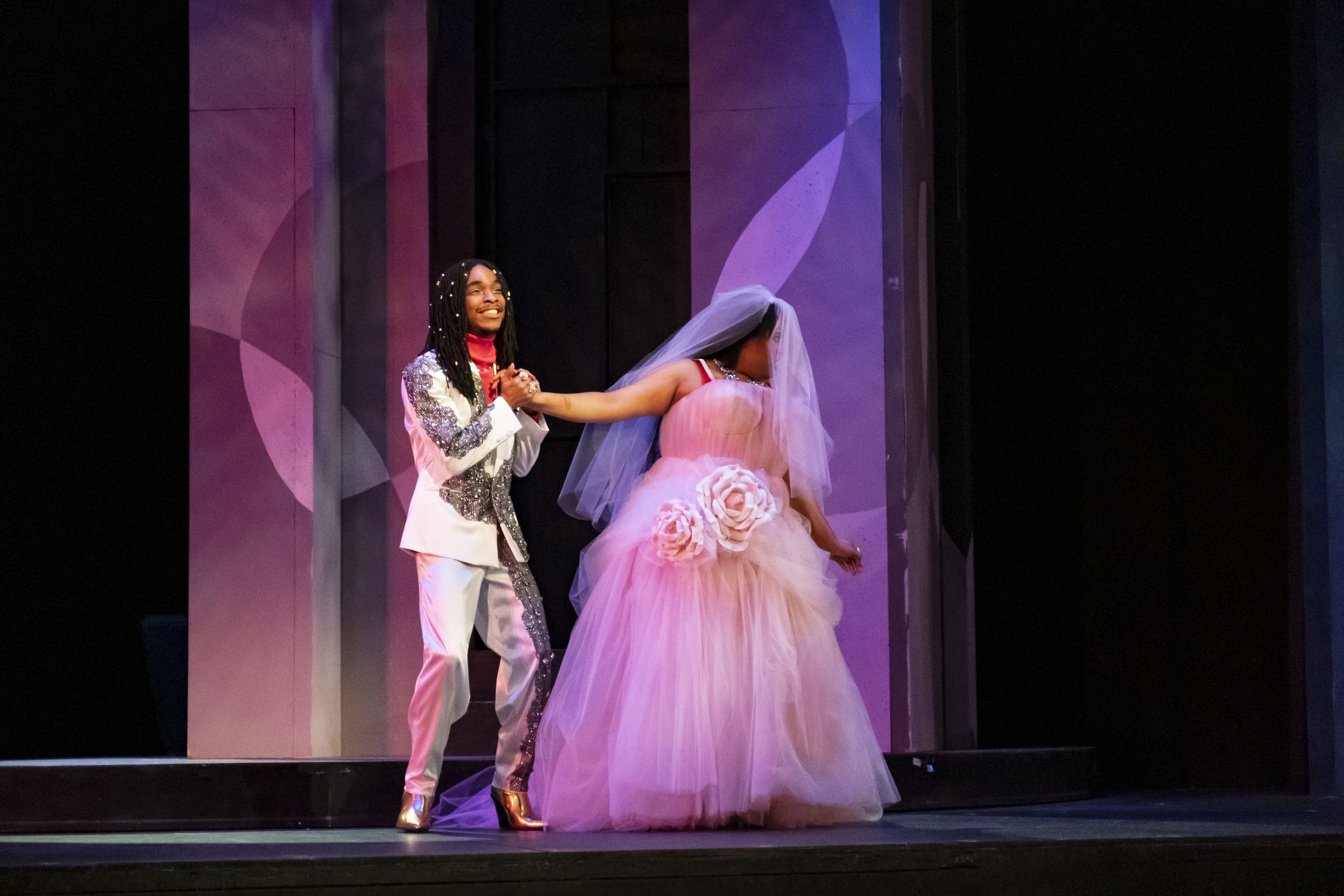




“The act of learning and performing the roles in this opera on the Temple stage is going to help students in multiple ways. So many of these skills teach them responsibility, professionalism, teamwork, creativity and critical thinking, which will serve them in nonopera careers as well.”
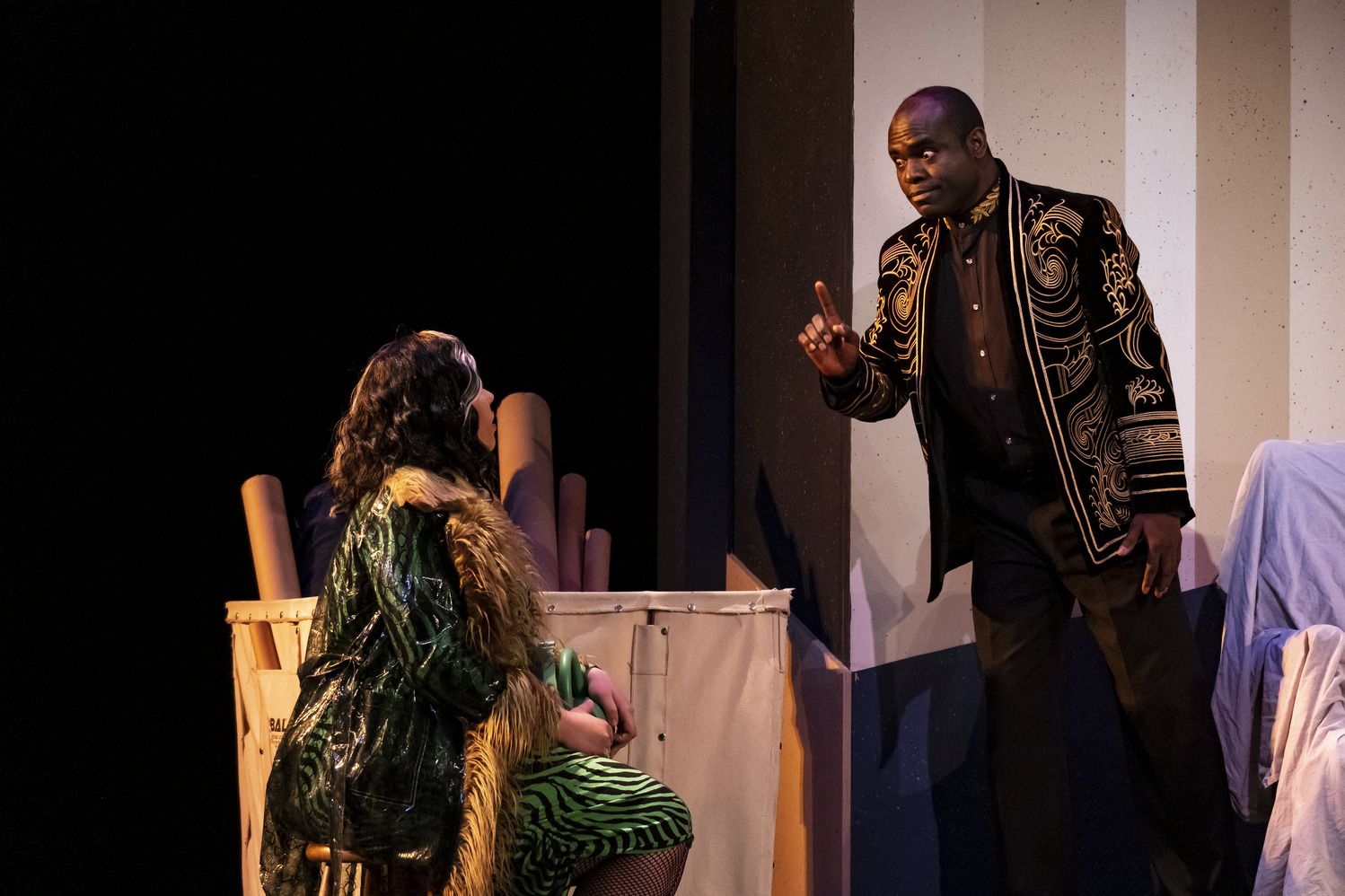
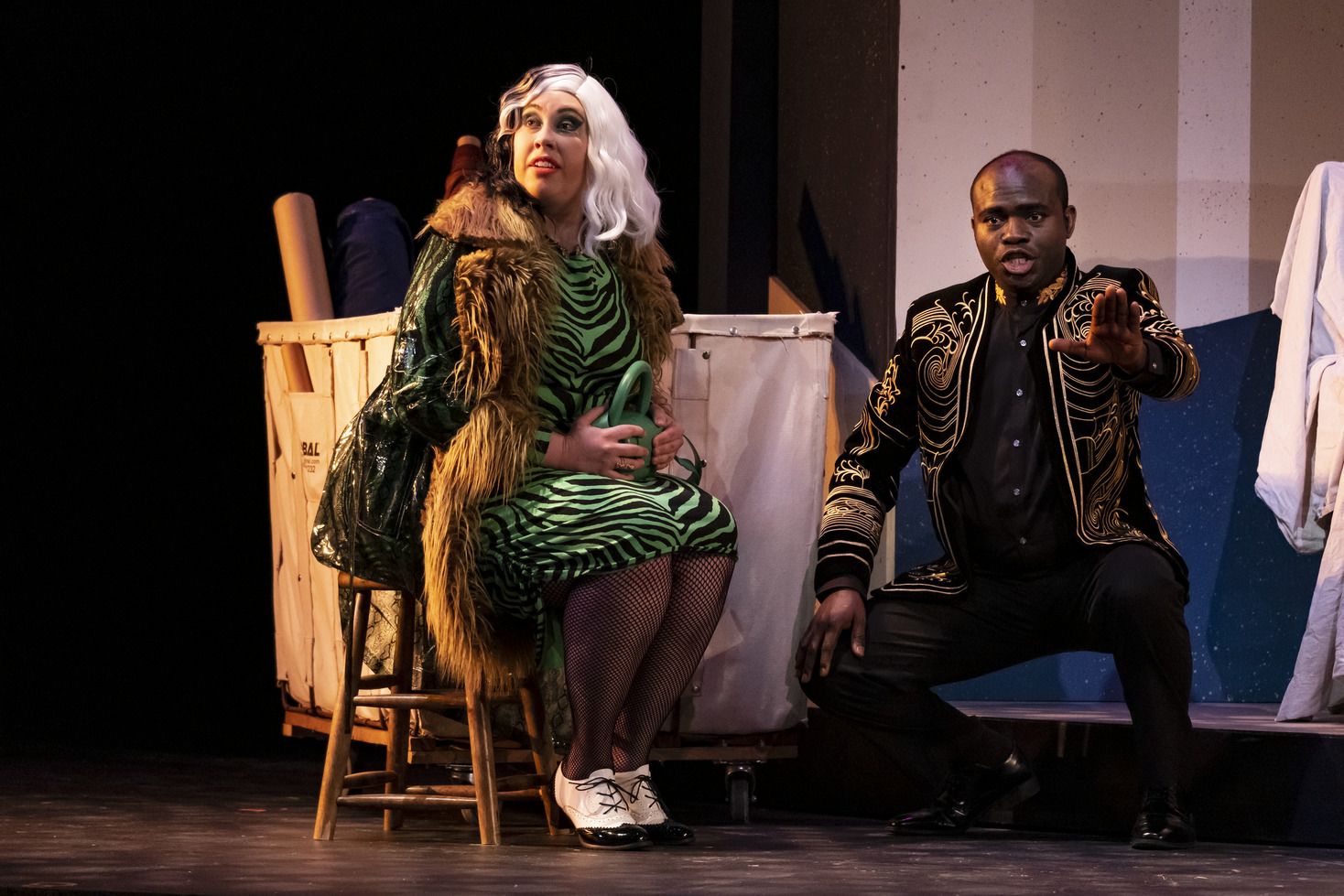
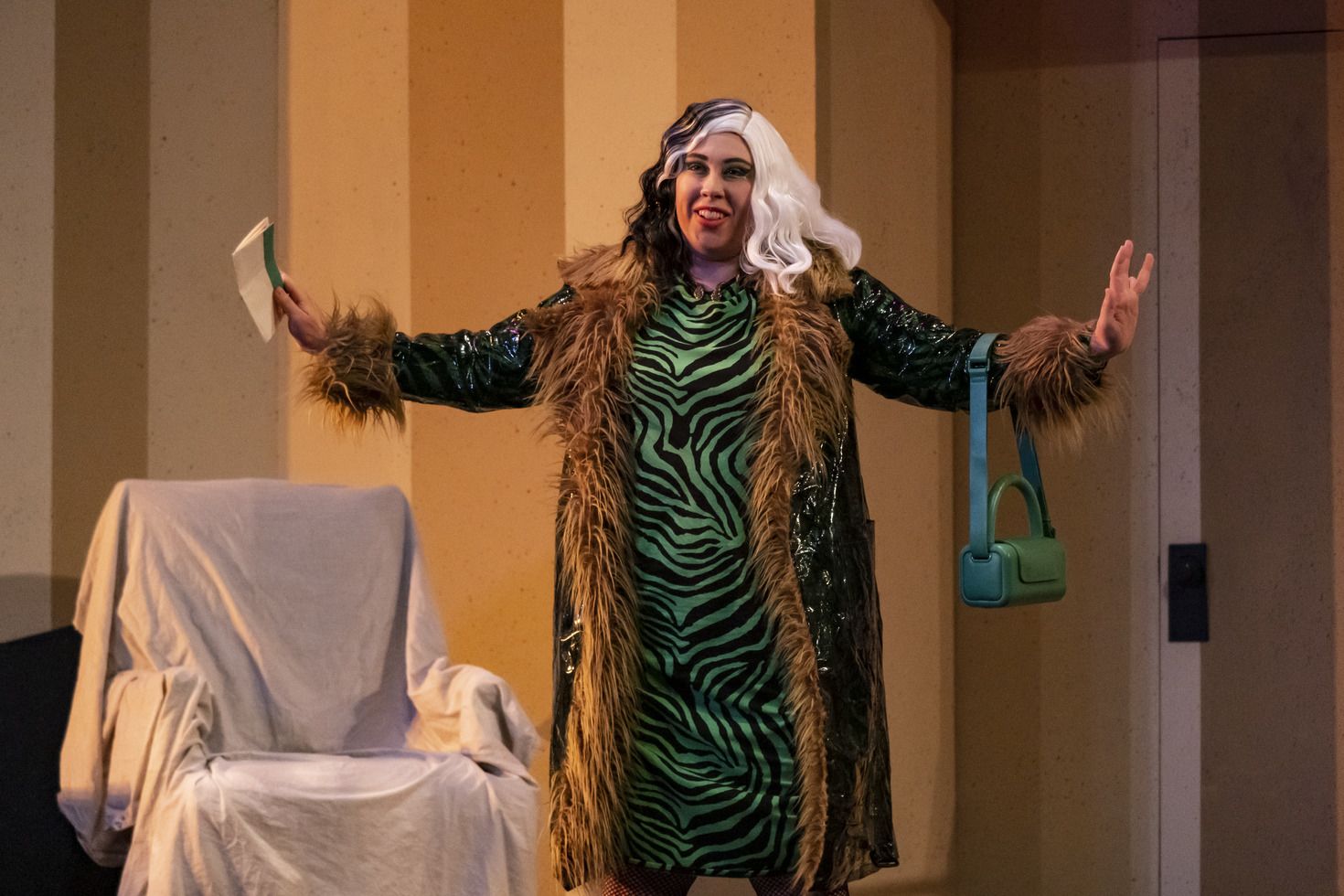



“I wouldn’t have gotten this opportunity somewhere else. We’ve been able to get acting training that a lot of opera students don’t get. Being able to work with Brandon, who’s an excellent acting coach, has given us a great education and one-up in our industry. Temple’s opera program offers the opportunity to be pushed in a nurturing environment. I think the faculty is different here. They care about you.”
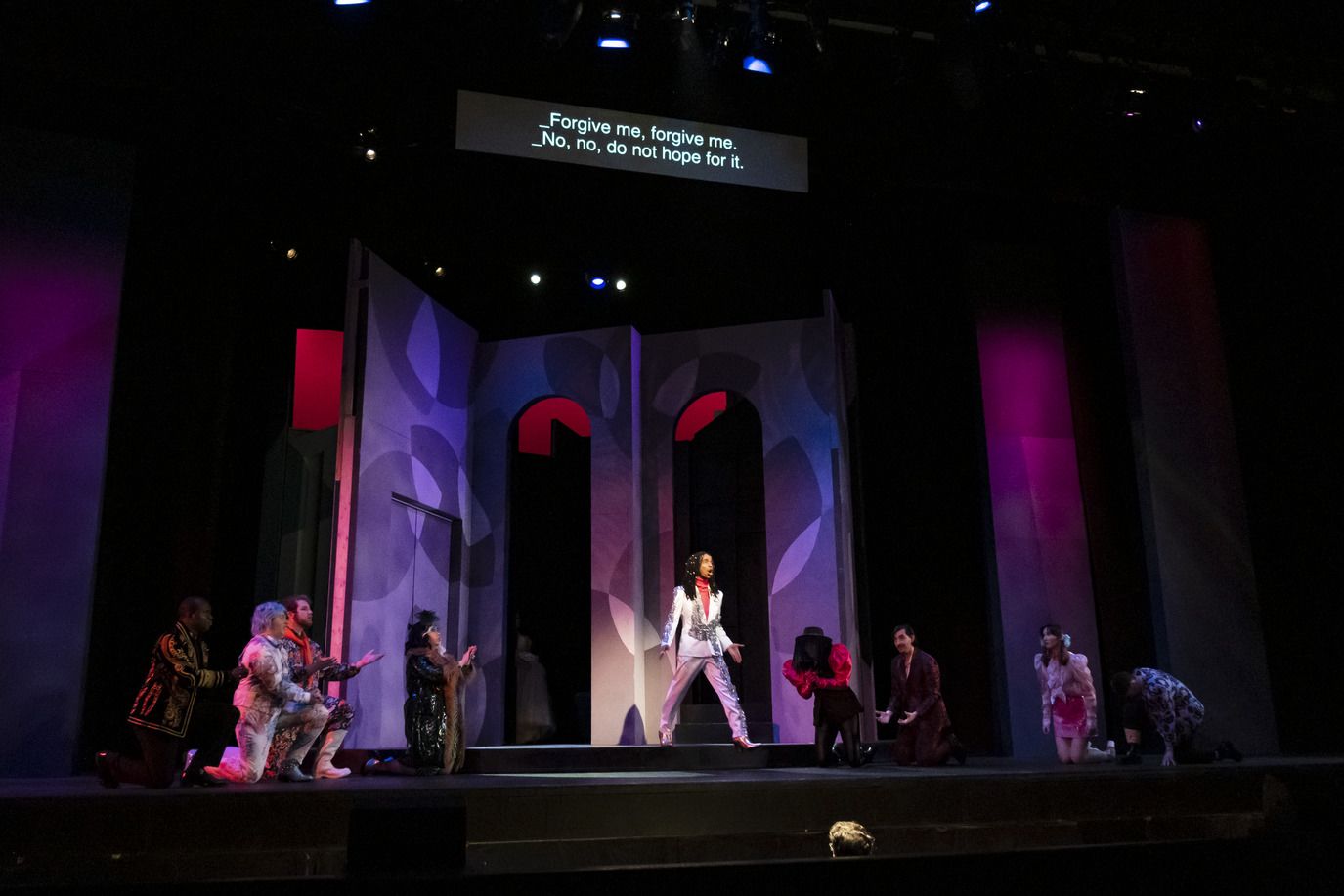
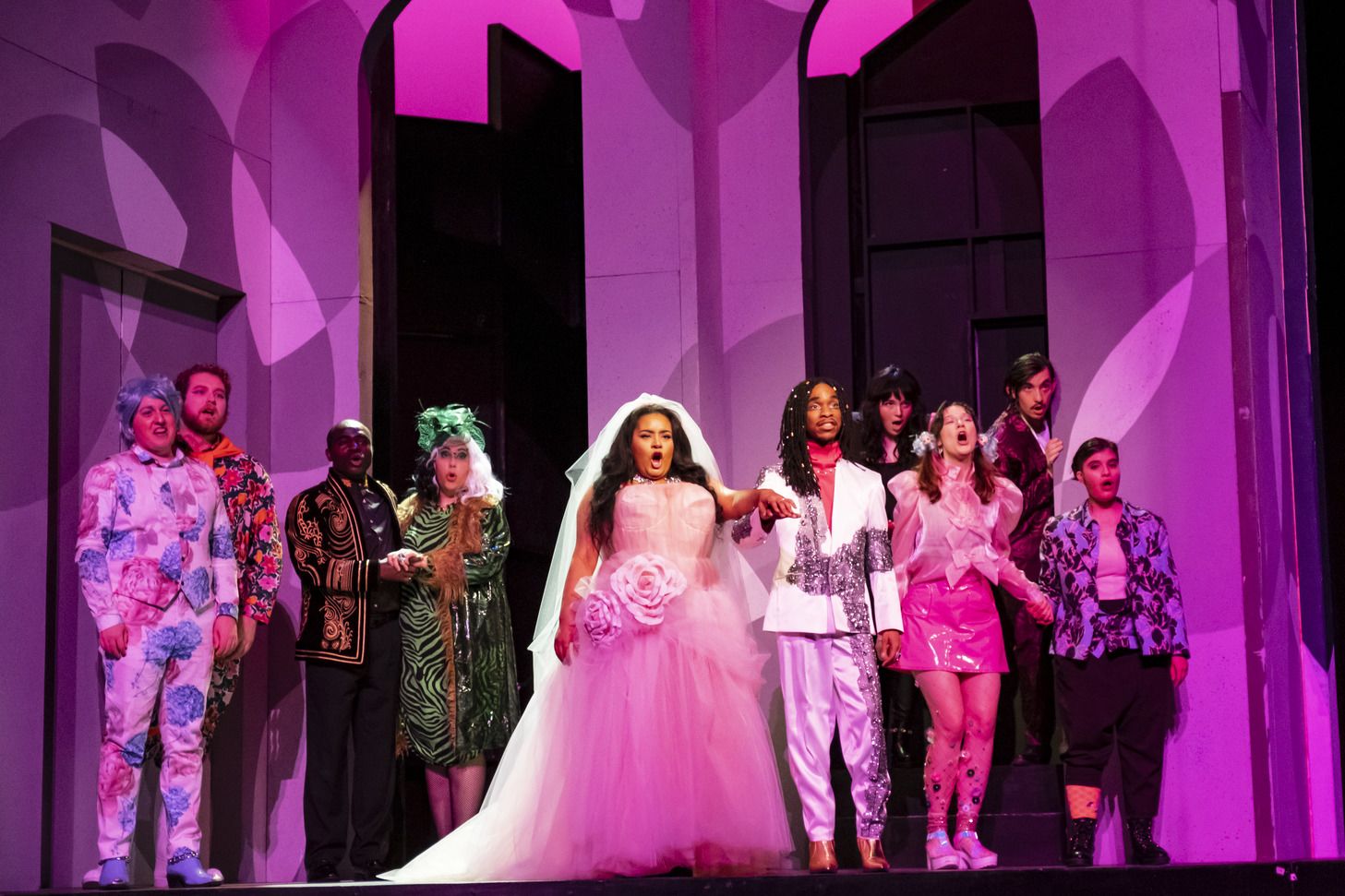
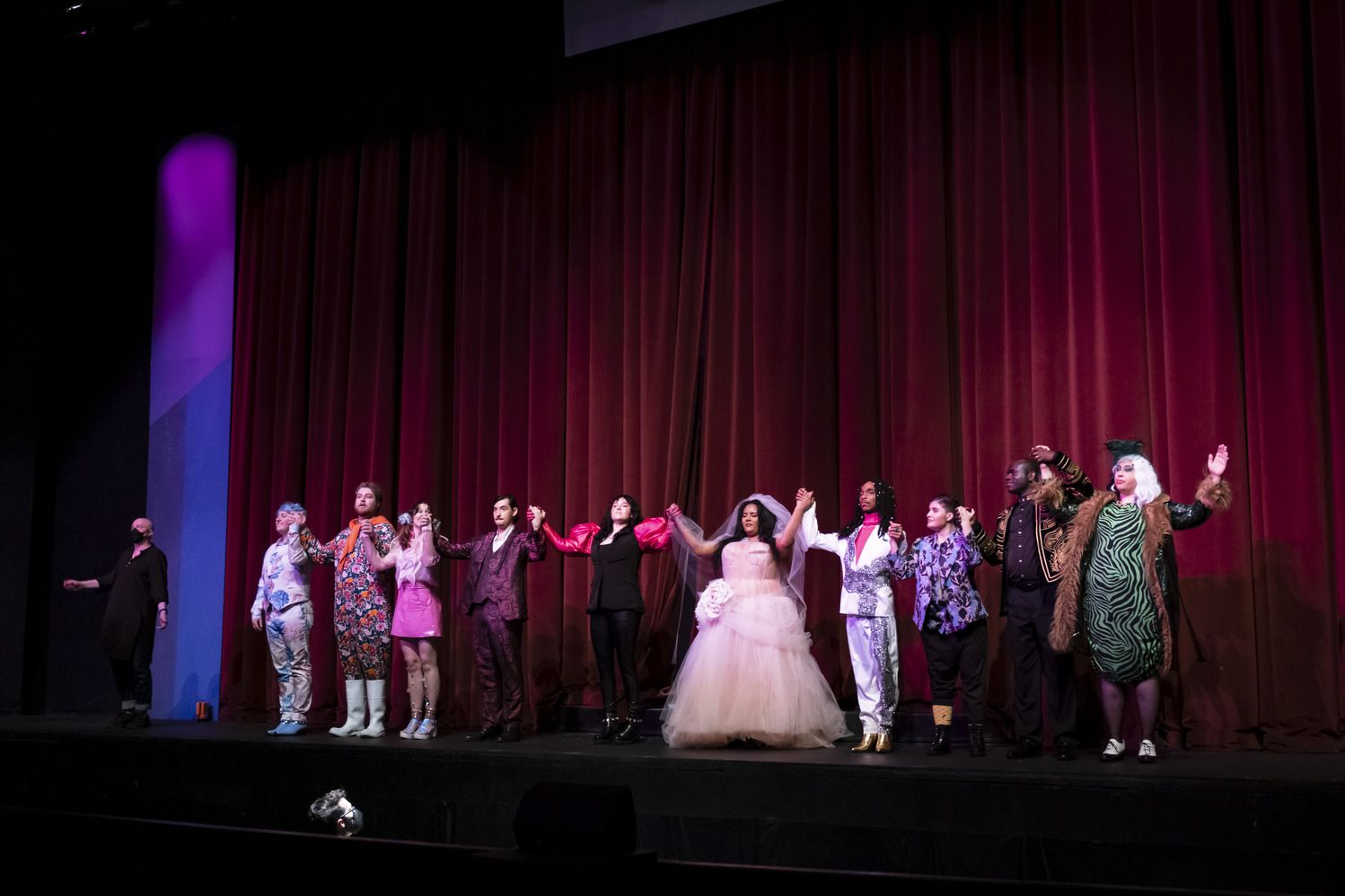



“The last performance of Figaro included about a dozen alumni who are working in the industry or are studying opera at the graduate level. One alumna said, ‘It’s just so good to be home and see the work that happens here at Temple still happening.’ We want to make sure our students come back and that we create a legacy of performance opportunities.”
Temple University Opera Theater’s production of Le nozze di Figaro is available on Boyer’s YouTube channel.
